Big tire upgrades are the most effective way of increasing ground clearance. This is especially important for overcoming obstacles in an off-road situation since your axles will be higher off the ground. There are however a few limitations, especially when it comes to IFS (Independent Front Suspension) 4WD trucks. SFA (Solid Front Axle) trucks suspension geometry is a lot less complex and thus much easier to upgrade.
Most trucks can accommodate a 33” tire without a lift kit. Trimming of fender liners and wheel arches combined with adjustments to torsion keys might be necessary on most IFS (Independent Front Suspension) trucks. Fitting wheel spacers and 2” leveling kits will improve the clearance from the UCA (Upper Control Arms).
In most cases fitting a 2” levelling kit is the most economical way to gain clearance for larger tires. It’s also the most popular.
Table of Contents
The minimum requirement for fitting larger tires varies from truck to truck. Also, if you have an Independent front suspension truck you are somewhat limited to how big you can go versus a truck with a Solid Front Axle or live front axle setup. Most IFS trucks and SUV’s can get away with a 33” tire without much drama and some small modifications, as you will see below.
Before embarking on this exercise, you need to determine what your main application with the truck will be. Are you planning on doing extensive off-roading, towing, hauling or overlanding? Perhaps the tire upgrade is purely for aesthetics reasons. Do you want to squeeze the biggest tire possible on your truck in the most economical way? Is limited practicality not a concern?
Let’s see what your options are.
In many modern IFS trucks a (33.3”) or 295/70 r17 combined with a 1.75-2” levelling kit is the absolute largest size tire you can fit. In addition, you need a minimum +9 offset rim for improved clearance at the UCA.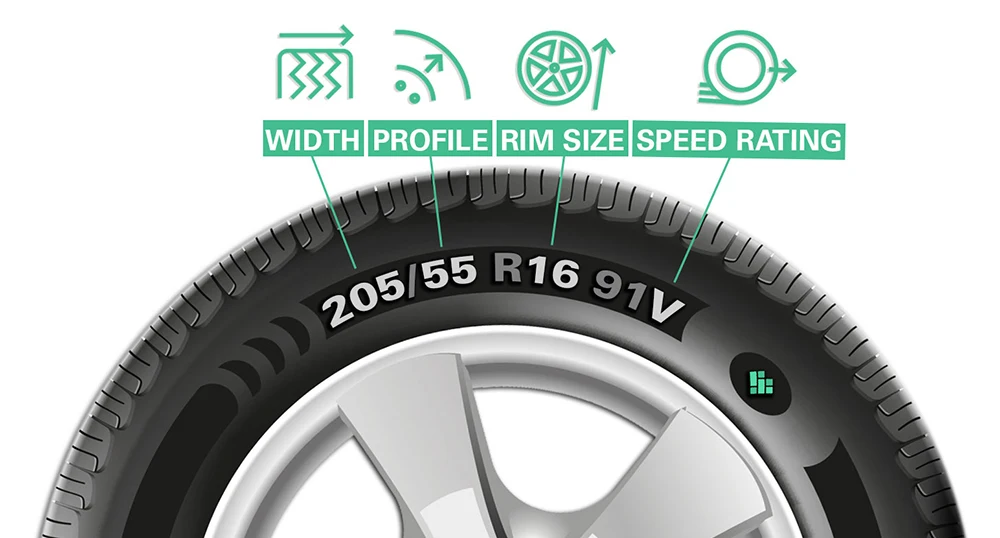 Anything less than that and you’ll have to opt for a narrower tire like a (32.7”) or 285/70/17 before you start running into clearance issues with the body panels.
Anything less than that and you’ll have to opt for a narrower tire like a (32.7”) or 285/70/17 before you start running into clearance issues with the body panels.
This is just a general guideline and will vary between trucks.
When you opt for a 4” leveling kit your upgrade options are much larger. Depending on the truck suspension, if it’s an IFS, you’ll need to fit a diff drop kit to bring the CV angles back down so as to minimize the chances of eating CV’s every time you venture off-road. With a 4” lift you’ll need to adjust torsion keys, if applicable, and fit an aftermarket adjustable UCA to be able to set your caster angles properly. Also, don’t forget to upgrade your bump stops too to prevent scrubbing at maximum compression when flexing off-road.
A 315/70/17 or 34.4” tire will fit nice and snug provided you’ve opted for an aftermarket rim with a more positive offset for improved clearance away from the UCA.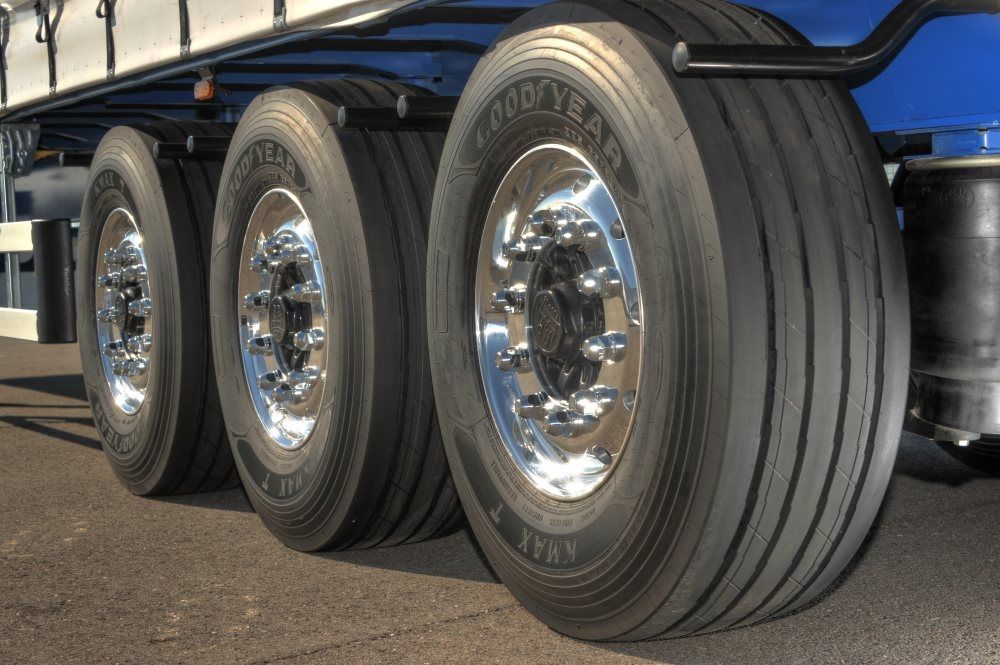 Trucks with Sold Front Axles can easily accommodate a larger 35” tire without much trimming in the form of 35X11.5R18 or 35X12.5R18. If your truck has front crash bars you will need to have these removed for better clearance up front. More about that here.
Trucks with Sold Front Axles can easily accommodate a larger 35” tire without much trimming in the form of 35X11.5R18 or 35X12.5R18. If your truck has front crash bars you will need to have these removed for better clearance up front. More about that here.
In most cases with IFS trucks, a 2” to 2.5” lift and some trimming of fender liners will accommodate a 33” tire. Most SFA vehicles will accommodate a 33’’ tire with minimum body and fender modifications.
Click here to learn more about the crucial modifications when fitting 33” tires, and the minimum lift requirement necessary for a successful upgrade.
Most modern 4WD trucks like Ranger’s, Tacoma’s and Colorado’s have a lot of safety features built into the framework and chassis which causes complications when installing bigger tires.
In the case of the 3rd Gen Tacoma, the body mount protrudes out quite a bit which restricts you from fitting oversized tires without, (A) either buying an aftermarket body mount or (B) cutting, welding and painting the existing mount.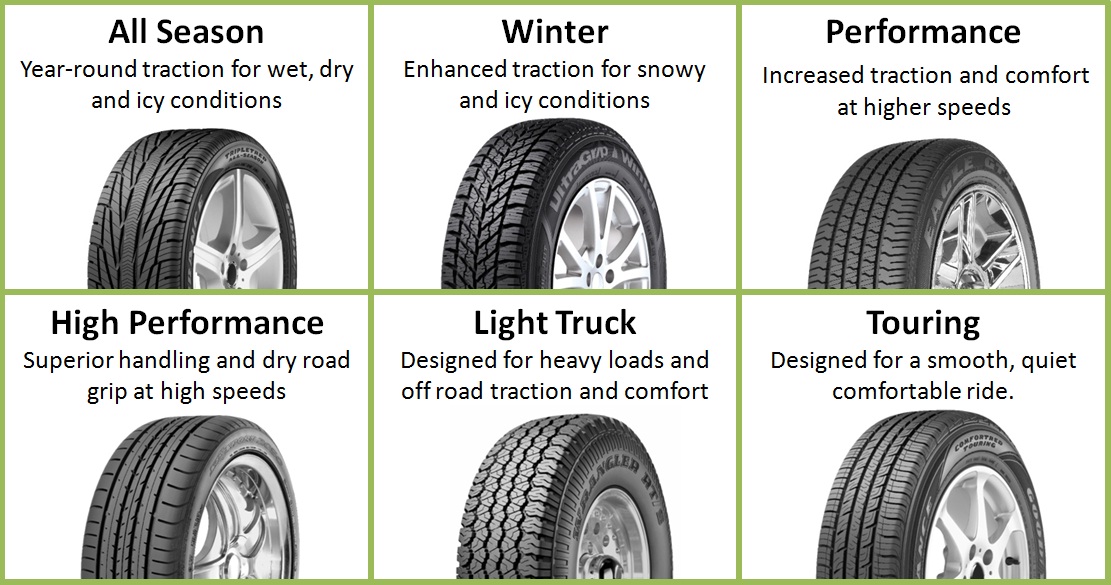 This is quite a job and if you are not familiar with grinders and welding machines, then rather leave it to a professional custom shop.
This is quite a job and if you are not familiar with grinders and welding machines, then rather leave it to a professional custom shop.
Then you have the front crash bar mounts as in the case of the modern Ford trucks. These restricts the wheels at full lock with oversized tires so you’ll need to remove them completely or cut it away to create more clearance. Click here for the full breakdown of fitting bigger wheels to a Ford Ranger
The biggest tire you can fit to a Ram 2500 is a 35×12.5”. This will allow full lock-to-lock turning abilities without rubbing as well as full articulation and droop.
The above mentioned tire is for the radius arm Ram trucks from 2014 to present 2500’s and the 2013 to present 3500. The fitment guide in this article is not to determine how much you can get away with, however it’s aimed at fitting the biggest tire possible without losing any practical application on the truck.
Click here for a deeper dive into the technical requirements
The biggest tire you can fit on a stock CHEV or GMC 3500 is a 295/65R18 on the factory stock wheels at stock ride height.
GM designed the front IFS suspension on the 3500 to be slightly adjustable by manipulating the torsion bars. This will allow you to fit a larger tire without much scrubbing at full turn and at full compression. This is good news, however, be warned that when you start fiddling with the torsion bars, you start altering the geometry of the IFS suspension, which includes changing the angles of the CV joints, upper & lower ball joints, and the tie rods.
With that being said, let’s see what the max tire size you can fit on a stock 3500 with/without a lift kit.
The biggest tire you can fit on a 2021 GMC AT4 running factory stock suspension and rims are a maximum of 34.8-inches. This equates to a 285/75R18 (34.8”) or 305/60R20 (34.4”) with no trimming or rubbing.
If you are not prepared to do trimming and cutting and you are running stock suspension then you’ll be limited to a maximum of 34.8-inch tire, depending on the tire brand of course.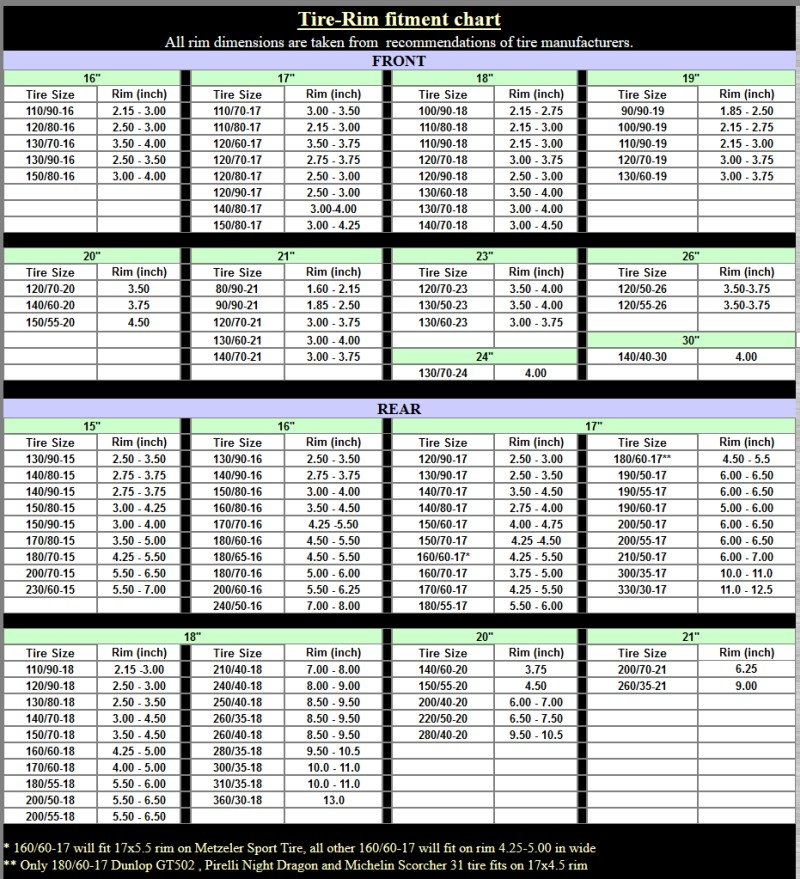 The up side, there are many other alternatives you can try in both 18” and 20”.
The up side, there are many other alternatives you can try in both 18” and 20”.
Let’s now look at exactly what is required to make the biggest tires fit, as well as some of the most popular tire and suspension combinations guys have done with 100% success.
The biggest tire you can fit on a 2014-current GMC Sierra 1500 running factory stock suspension and rims are a maximum of 32.6 inches.
If you are not prepared to do trimming and cutting and you are running stock suspension then you’ll be limited to a 32.5-inch tire, depending on the tire brand of course. The up side, there are many other alternatives you can try.
Let’s now look at exactly what is required to make the biggest 33-inch tires fit, as well as some of the most popular tire and suspension combinations guys have tried with 100% success.
The maximum size on the Tundra is a 295/70/R18 or 295/60 in a 20 inch with a +18 to +20 wheel offset, on a 9-inch wide wheel.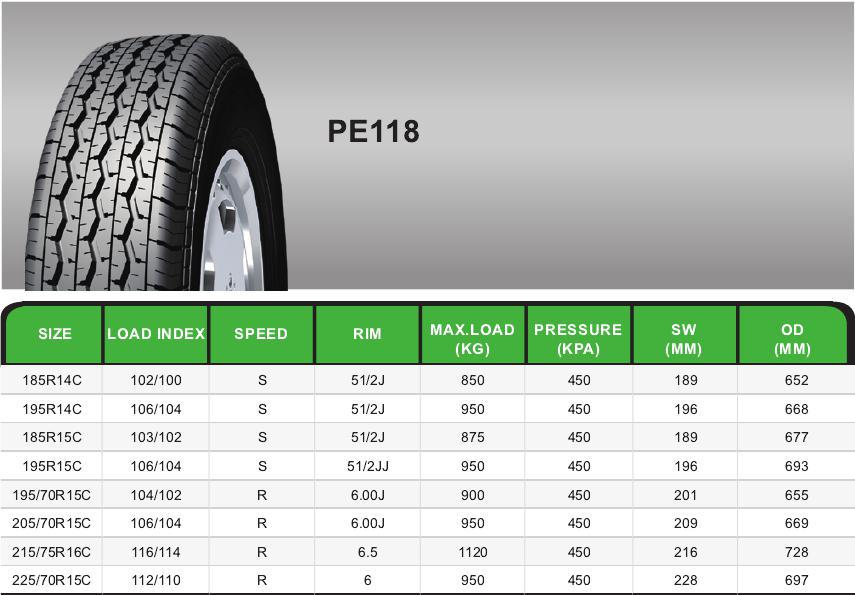
Now that we know the max tire size on a stock Tundra, let’s dive deeper into the actual fitment and later look at the biggest tire size you can fit with a 3” and 6” lift kit! or if you want to know what is required to fit 33″ tires on a Tundra without a lift then read this.
The largest tires you can fit on a stock F150 without removing the crash bars are 33”- 34” without severe rubbing. Alternatively, you can fit 32” if your rims are 10” wide.
If you deice to go the biggest tire you can squeeze inside the wheel arch, keep in mind you will experience a drop in MPG, but nothing too significant unless you go 37” or bigger. If you opt for a more aggressive AT or MT tire, you will experience increased road noise inside the cabin. In most cases, the more aggressive, the noisier.
Then there is the issue about the crash bars on all modern Fords. We’ll look at what that’s all about, and if you should remove them when trying to fit oversized tires?
The biggest tire you can fit without any additional modification is a 35”. If you are prepared to do a bit of body trimming
If you are prepared to do a bit of body trimming
At the end of the day you still want all the practicality of your truck and your tire size upgrade should enhance your trucks abilities and capability, not detract from it. You still want full articulation and droop with maximum suspension travel.
So let’s get into it and see exactly what’s required when fitting bigger tires on your Ram 1500 with a stock suspension.
Fitting 35” tires to a 3rd Gen Tacoma requires a bit of body mount modifications as well as wheel arch trimming. You will require a minimum 2.5” lift, negative offset (-12) rims, and you’ll need to do some additional body modifications, such as cutting and welding of the body mounts and bending away of the pinch weld.
On the rear, it’s a straightforward fit with no clearance issues. You can get full tuck on the rear without any hassles. You can trim the wheel arch for improved clearance, however you will lose your wheel arch liners.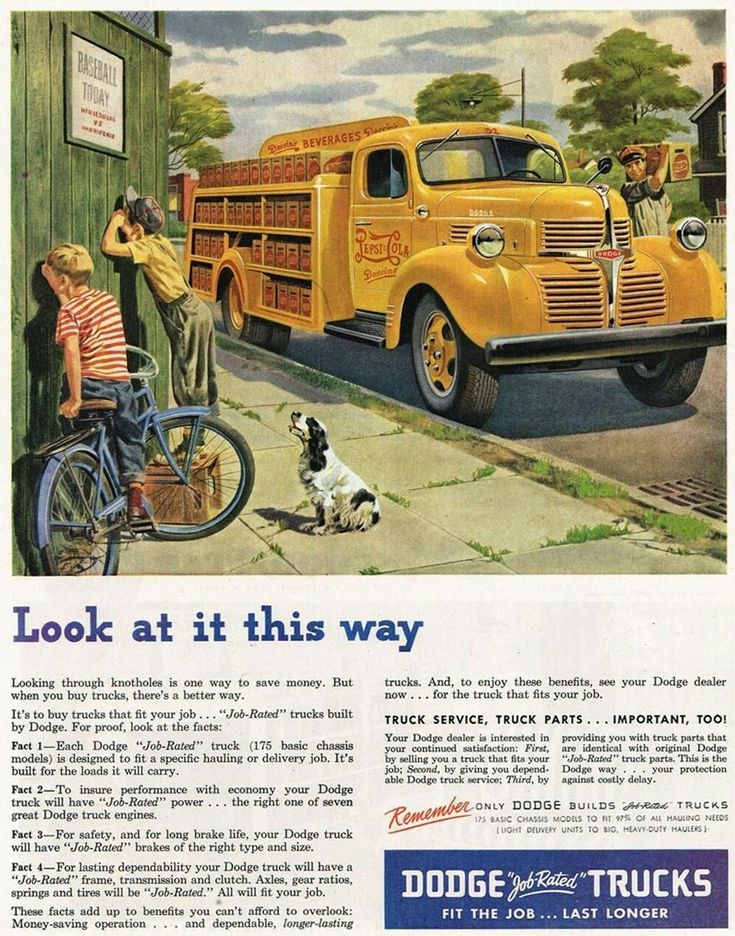
Also you need to remember the front wheels don’t only move left and right when turning, but there’s also some forward and backward movement. This is why you get scrubbing at full lock when turning and why it’s necessary to do CMC’s and trimming of the pinch weld.
Click here to read the full breakdown of fitting 33” tires to a 3rd Gen Tacoma
If you want to fit a larger 33” tire without a suspension lift, there is some modification needed. The Ranger T6 crash bars protrude from the wheel well and the bigger 285/70/17 tire makes contact. These will need to be removed/modified first so as not to damage the new tires. They are quite a PITA to remove so be prepared. Once removed, and a 20+ offset aftermarket wheel is fitted you should be able to get the 33” tires to fit comfortably.
Click here for the full breakdown of fitting bigger wheels to a Ford Ranger
33-inch tires can be fitted to a stock Jeep Wrangler JK, but with minimum clearance on the front bumper and not enough clearance for full articulation off-road.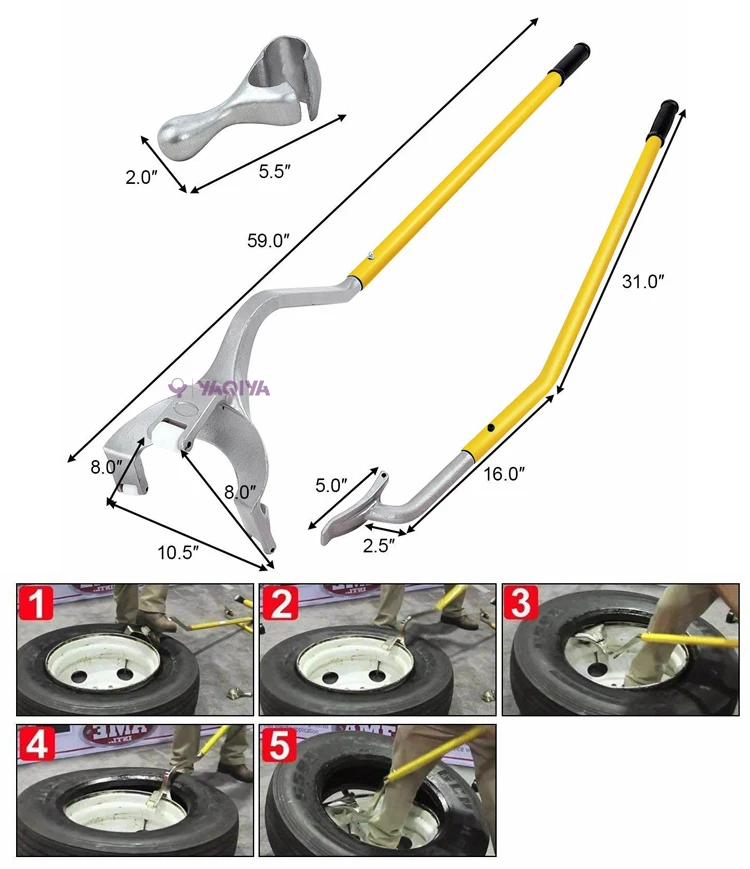
Before running out and fitting bigger tires to your JK, make sure you understand all the implications and that there are other factors that comes into play such as backspacing, clearance, fuel economy, handling and more.
To take full advantage of the Jeeps legendary articulation, you would do well to fit a 3-4” lift before fitting 33” tires.
Click here for the full breakdown of fitting 33” tires to a Jeep Wrangler
Not all FJ Cruisers are created equally, so certain model FJ’s might rub on a 33″’s, running a stock suspension while others won’t. What could be an influencing factor is the tire itself. So it’s also safe to say, not all tires are created equally i.e. mold, width, etc. So they are not all made to exactly the same measurement.
So, the biggest tire you can safely fit on an FJ without body scrub or requiring any chops is usually a 275/70/17. That will be on the stock tires, stock rims, no lift, no chop, and no spacers. Anything over and above this requires a body chop and a small 2” lift.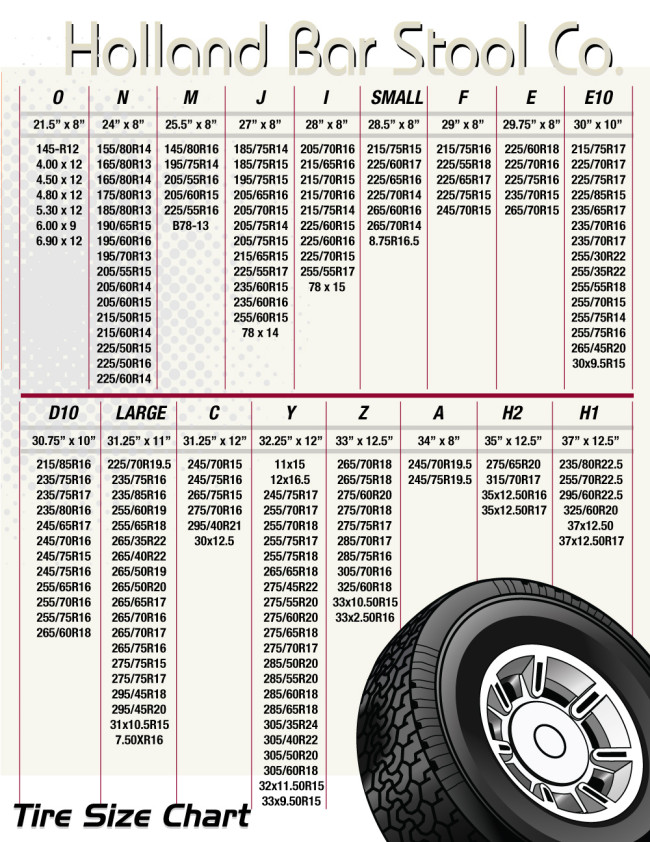
Click here for the full breakdown of fitting 33” tires to a FJ Cruiser
The biggest tire you can fit on a Chevy Colorado with stock suspension and stock rims are 265 65 17’s. They will fit without any rubbing problems, and no trimming or additional modifications are required to make them function properly.A 2” to 3” lift kit is the recommended option if you are planning on using the vehicle for off road use or overlanding applications. You will achieve the best off road off-road capability, ride comfort, as well as load carrying ability with this option, running 33” tires. Load carrying ability is of vital importance when doing overlanding, since you are carrying gear, storage, fuel, water, shade. Rooftop tents, recovery gear and more.
Click here for the full breakdown of lifting a Chev Colorado
The largest size you can fit on a Nissan Frontier with a stock suspension is 265/75/16. This size does not cause any rubbing or requires trimming of fender liners.The 265/75/16 is the largest size you can fit, even with a 2.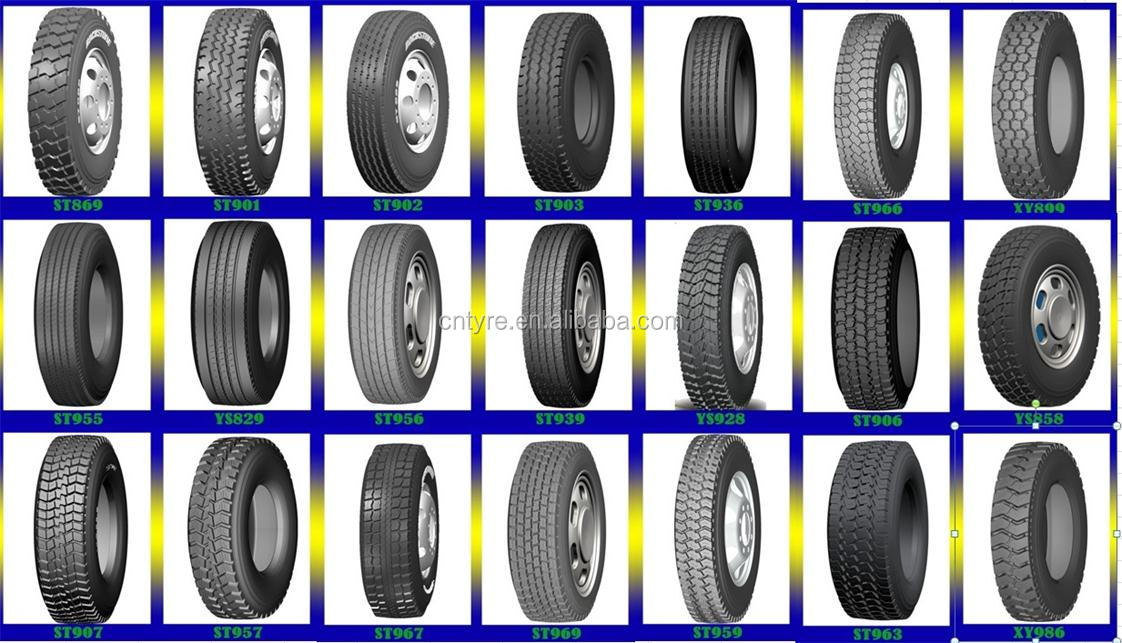 5″ spacer. It is also the largest tire that can fit on the stock wheels without any additional modifications needed. That size is just short of 32” and measures exactly 31.6 inches. If you fit an aftermarket rim with a more negative offset, you run the risk of the wheels scrubbing and hitting the fenders at full lock and full compression.
5″ spacer. It is also the largest tire that can fit on the stock wheels without any additional modifications needed. That size is just short of 32” and measures exactly 31.6 inches. If you fit an aftermarket rim with a more negative offset, you run the risk of the wheels scrubbing and hitting the fenders at full lock and full compression.
Click here for the full breakdown of the biggest tire you can fit on a Nissan Frontier
We have mentioned quite a few variables to consider before dropping a load on expensive oversized tires. You should first determine what the primary application for the upgrade is. Is it purely for aesthetics or will you need maximum practicality, off-road ability, while maintaining maximum articulation?
One of the easiest and most effective changes that an automotive enthusiast can do to change the look and personalize their ride, is to change the tires. With the help of Toyo Tires I find out how to determine an appropriate size tire for the vehicle, which is not always easy when you’ve already decided not to stick to the factory size.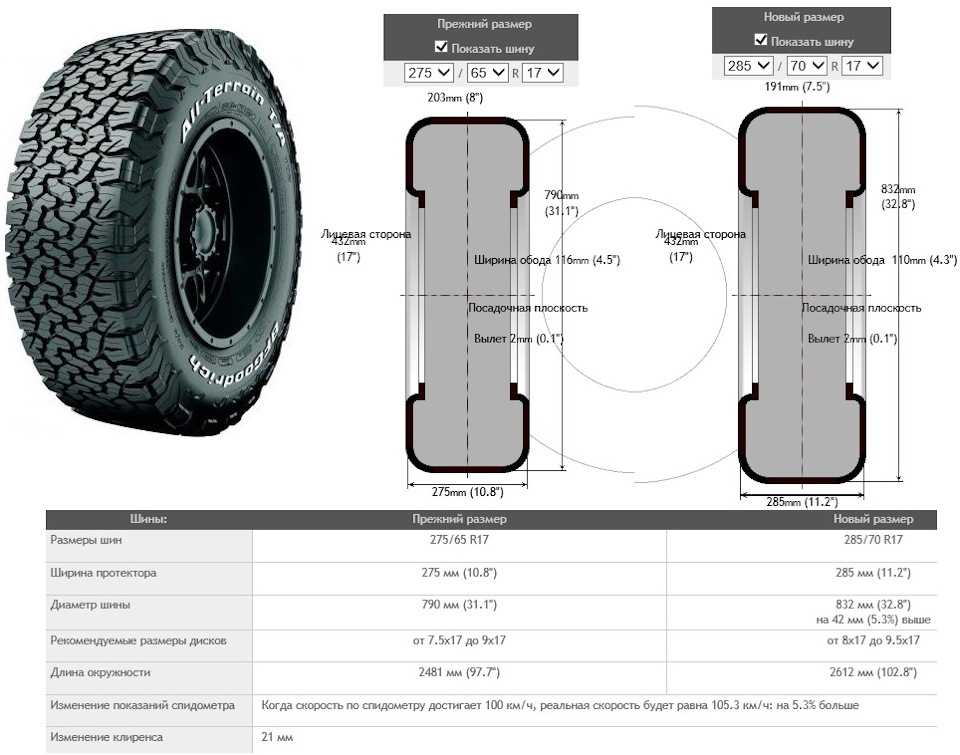
There are several questions that need to be answered to help steer you to the correct tire for your application. First, you need to identify the intended use of the vehicle. This will help direct you to a highway tire, all-terrain, hybrid or mud terrain tire. Next, you set targets for overall size and chose a tire that will fit the vehicle and more importantly, safely caries the load the vehicle was designed for.
Picking a tire for a new vehicle can be a stressful situation, but with the help of Toyo Tires’ Right Sizing that decision just became easier.
The last thing anyone wants is to pull out of the tire shop, turn on to the road and hear rubbing. I had the chance to speak with Todd Bergeson, light truck tire product manager at Toyo Tire USA Corp. to get an understanding of how to pick the right tire. Choosing the correct tire for a new vehicle, among all the choices out there, can seem overwhelming, but with the help of Toyo Tires’ Right Sizing options, that decision just became easier.
“Toyo has been working hard to come up with viable solutions to allow consumers to achieve the look, size, and performance they dream of, with a tire that is properly load rated for their vehicle,” Bergeson explained. “We have come up with the nomenclature ‘Right Sizing,’ and it refers to Toyo producing a tire that is engineered for the application it is intended for. Toyo is now producing ‘Right Sized’ tire options in the Open Country A/T II all-terrain tire for various SUVs, pickups, and soft-roaders like the overlanding segment which appreciates this kind of application.”
The factory wheels and tires were not going to cut it for this truck.
To put this to the test I looked to find a new, larger tire for our 2019 Chevrolet Silverado. I knew that I wanted something larger than the factory 255/70R17, but not something massive where tons of modifications would need to be done. I wanted the truck to look clean and be functional as it would be seeing time in the dirt, but also on the road and everyday use.
Our new Silverado was designed to drive great from the factory and the engineering that goes into them is top-notch. The last thing I would want to do is to disturb the excellent ride characteristics of our new truck, just to achieve a tougher, more personalized look. Like most customers, I want to “have my cake and eat it too.” I didn’t want to compromise on the ride and noise, just to get a better look. Lucky for us, Toyo Tires uses sophisticated computer design software and simulators to develop quiet, yet aggressive looking tread patterns.
The Tire and Rim Association Inc. is the technical standardizing body of the tire and rim manufacturers of the United States. Simply put, LT or P-Metric refer to the tire type of service. LT designates a tire primarily intended for service on a Light Truck and P being designated primarily for service on passenger vehicles.
“It is important to know that there are some significant tire construction and inflation pressure requirement differences between LT and P-Metric tires,” Bergeson said.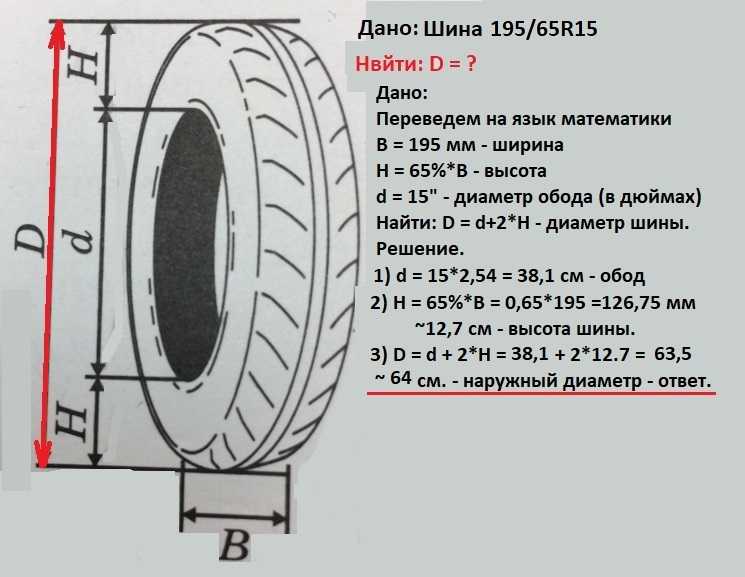 “In the case of a 1/2-ton pickup truck, the majority of OE vehicle manufacturers choose to outfit their trucks with a P-Metric tire.”
“In the case of a 1/2-ton pickup truck, the majority of OE vehicle manufacturers choose to outfit their trucks with a P-Metric tire.”
“There are several reasons a manufacturer would choose the P-metric tire for what we think of as a light-truck,” Bergeson continued. “First of all, the P-metric OE tire is plenty capable of carrying the maximum load the truck is designed and rated for at a lower psi than would be required for an LT-metric to carry the same load. With lower psi requirement, the ride will be more compliant. The P-metric tire is lighter weight, with helps with fuel economy and acceleration and braking responsiveness.”
“Additionally, a lighter, more compliant tire will be less harsh and therefore less abusive on suspension components, joints, bushings and body mounts over time,” Bergeson explained. “The P-Metric tire that is equipped as OE on modern pickups and/or SUVs are rated specifically for those trucks. And due to the design, they are best suited for the maximum weight and capacities of the 1/2-ton pickups.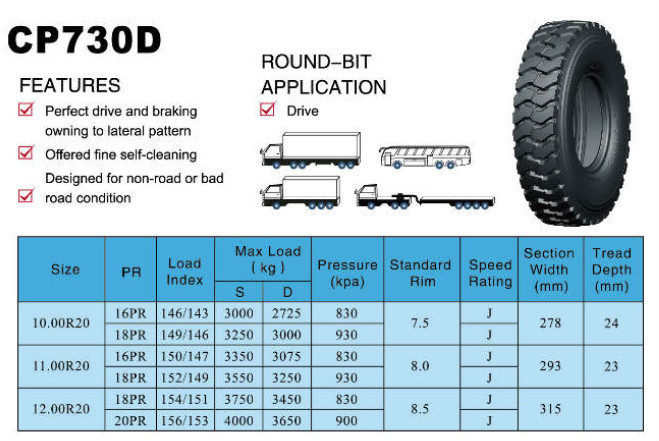 On the other hand, LT tires are intended for more severe use and heavier loaded conditions. To achieve the higher loaded capacity, higher inflation pressures are required. Both LT and P-metric load and inflation standards have been established by the Tire and Rim Association (TRA), of which Toyo Tires is a member.”
On the other hand, LT tires are intended for more severe use and heavier loaded conditions. To achieve the higher loaded capacity, higher inflation pressures are required. Both LT and P-metric load and inflation standards have been established by the Tire and Rim Association (TRA), of which Toyo Tires is a member.”
In the past, if you wanted to upgrade your truck with All-Terrain tires, for example, you would have to convert your truck from P-metric to LT-metric, simply because some tire makers back then and some still today, only produce these tires in LT-metric. Fast forward to today, the new trend is for customers to upgrade their small SUVs and CUVs for use off-road.
These vehicles are all unibody construction with relatively lightweight suspension components. It doesn’t seem right and it really isn’t right to put an LT-metric tire on these vehicles, but without an alternative, consumers will do it, to achieve the look and off-road traction they want and need. Thankfully, Toyo Tires offers tires within their Open Country lineup to fit these SUVs and CUVs in a more appropriate P-metric or Euro-metric option. Euro Metric is more similar to P-metric construction and meets a European standard.
Euro Metric is more similar to P-metric construction and meets a European standard.
“On a 1/2-ton chassis or smaller, staying with a P-Metric allows you to retain the OE ‘placard’ air pressure that has been set by the vehicle manufacturer to support its rated load-carrying capacity,” Bergeson said. “The engineers designed and developed these vehicles around that P-metric tire, so it will ride and drive the best with the same tire. If you go bigger or change the metric standard, you will change the ride and driving characteristics.”
“Your 1/2-ton truck’s ride will be significantly better with a P-Metric or Metric tire when compared with the installation of an LT fitment on that chassis,” Bergeson continued. “Traction is better, as the contact patch will be more effective due to the correct ‘inflation-pressure to vehicle-weight’ relationship.”
Depending on your truck model and how it is built, it may have come equipped with either a P or LT tire. Always consult your vehicle’s placard and/or owner’s manual when trying to determine the correct tire for your application.
Reading the sidewall of a P-Metric (left) and LT (right) tire.
“As a rule of thumb, an LT-metric tire can be installed on a lighter weight 1/2-ton or smaller chassis, but the ride quality will generally degrade, wear and tear on suspension parts will increase and the heavier weight will change the responsiveness,” Bergeson said. “It should be noted that you are never to install a P-Metric or Euro-metric tire on any vehicle that came originally equipped with an LT-metric tire, as they are not properly load rated for such a chassis.”
Another big difference between an LT and P-Metric tires is how it will hit your wallet. The cost of the P-metric is lower than the LT tire of the same size. Sticking with a P-Metric tire may make more sense and have some additional cost savings.
Everyone has been there once before, wanting to put the largest possible tire on their truck, get everything installed, go to turn the wheel, and you end up back under the truck trimming and cutting away to make it clear.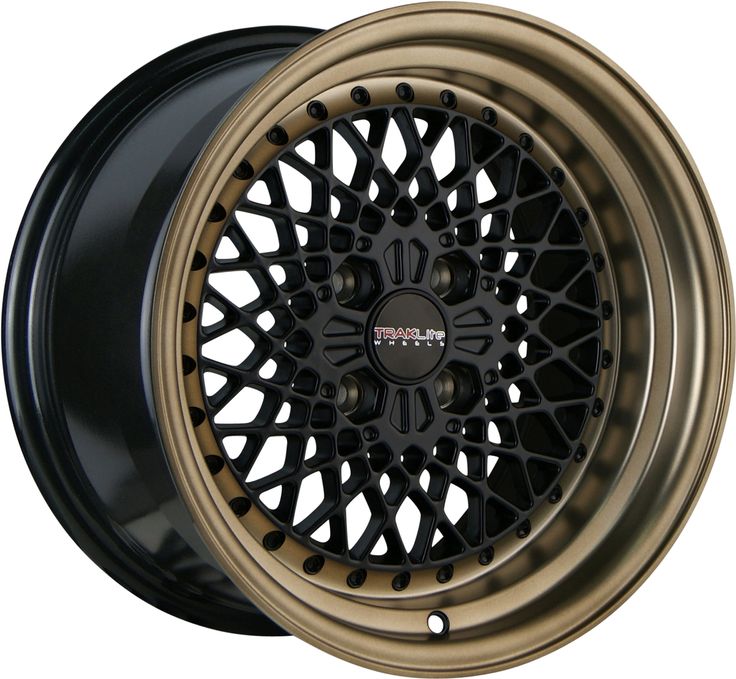 I decided that I was unwilling to cut anything on my brand new beautiful 2019 Silverado, but I wanted a larger tire.
I decided that I was unwilling to cut anything on my brand new beautiful 2019 Silverado, but I wanted a larger tire.
To determine the size that I needed for my truck I used Toyo’s Find Tires section on their website where I was able to determine which plus size was right for me. The chart below breaks down what different plus sizing options are out there and how they are calculated.
Plus Zero: If the wheel diameter remains the same and only the width is increased it is called “Plus Zero.”
Plus One: If the wheel size is increased by one inch it is “Plus One.” This sizing mounts tires with an increased section width and a lower aspect ratio on wheels of a larger diameter. A Plus One fitment for a car with 16-inch original equipment wheels would use 17-inch wheels. As a general rule of thumb, Plus One sizing:
As a general rule of thumb, Plus One sizing:
Plus Two: If the wheel size is increased by two inches it is “Plus Two.” For example, a Plus Two fitment for a car with 16-inch original equipment wheels and tires would be 18-inch wheels and tires. As a general rule of thumb, Plus Two Sizing:
Plus Three: If the wheel size is increased by three inches it is “Plus Three.” For example, a Plus Three fitment for a car with 16-inch original equipment wheels and tires would be 19-inch wheels and tires. As a general rule of thumb, Plus Three Sizing:

“On Toyo’s website one the Find Tires tab people can search a specific truck by its make, year, model, and even trim to see what was originally specified as an OE size for that chassis,” Bergeson explained. “A Plus Zero reference means a larger size tire is available to properly fit the OE wheel of the truck. That can allow for a slightly larger footprint and/or diameter while all remaining within spec for that truck.”
“In some cases, Toyo uses the term ‘Right Sizing’ to describe a tire developed specifically to fit an OE wheel, but to better fill the fender openings while giving it a more aggressive look and feel,” Bergeson continued. “One example is a P285/55R20 114T size of the Open Country A/T II. This P-metric tire is only offered by Toyo Tires and has an even more aggressive shoulder and sidewall and is a great look and perfect size for trucks such as an F-150, Tundra, Sequoia, and Silverado.”
To correct the Silverado's factory rake we installed Baja Kit's leveling kit. It was super simple to install and we had both sides done in under an hour.
It was super simple to install and we had both sides done in under an hour.
“The tire finder on our website takes into account your vehicle’s OE tire size and its maximum load capacity at placard pressure when making replacement tire recommendations.,” Bergeson said. “The options listed, are based on tire sizes we offer in both OE and plus fitments that will meet or exceed the loaded capacity of your OE tires. When we refer to plus fitments, Plus 1 means the tires will fit a wheel that is one-inch larger in diameter than OE. And depending on what is available, there can be sizes up to Plus Three or greater while maintaining an outside diameter that properly fits the OE wheel well and/or chassis height.”
To be able to get a little larger tire on the truck I installed a leveling kit. The Baja Kits leveling kit was installed underneath the factory strut assembly and in a matter of an hour, I was able to remove the factory rake. It was not a huge lift, but that was not what I was looking for with this truck, I simply wanted it to visually look good.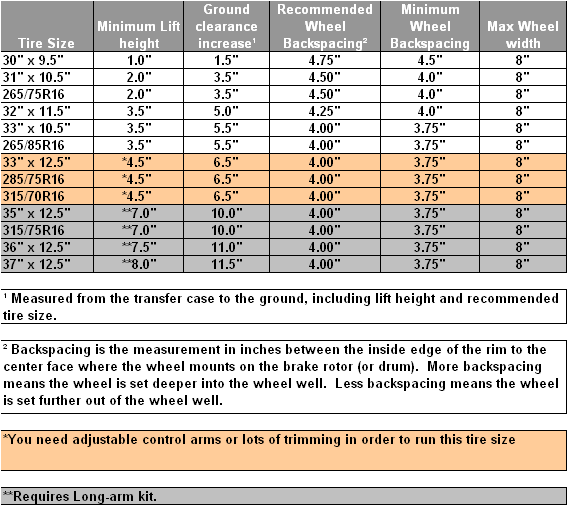 This is very common in the light-truck market, which is why “leveling” kits are so popular.
This is very common in the light-truck market, which is why “leveling” kits are so popular.
Toyo’s size references in the Find Tires section of their website are based on the OE chassis heights for all trucks. For that reason, too large of a tire like a 40-inch tire would not be found in those size recommendations as the truck would need to be lifted to accommodate that outside diameter. For custom builders, each individual tire section on the website has an expandable chart that provides all dimensions, weights, load and speed ratings of tires in order to determine the proper fitment in those situations.
Having the information I needed I picked our tire. I went with an LT285/75R17 Open Country M/T, which is roughly a 34-inch by 11.5-inch tire. The decision to go with this size was done by using the information provided by Toyo and the idea in my mind on what I wanted the truck to look like in the end.
With the new wheels and tires loaded I headed to the Woodcrest Ramona Tire location to get the Open Country M/Ts mounted and on the truck.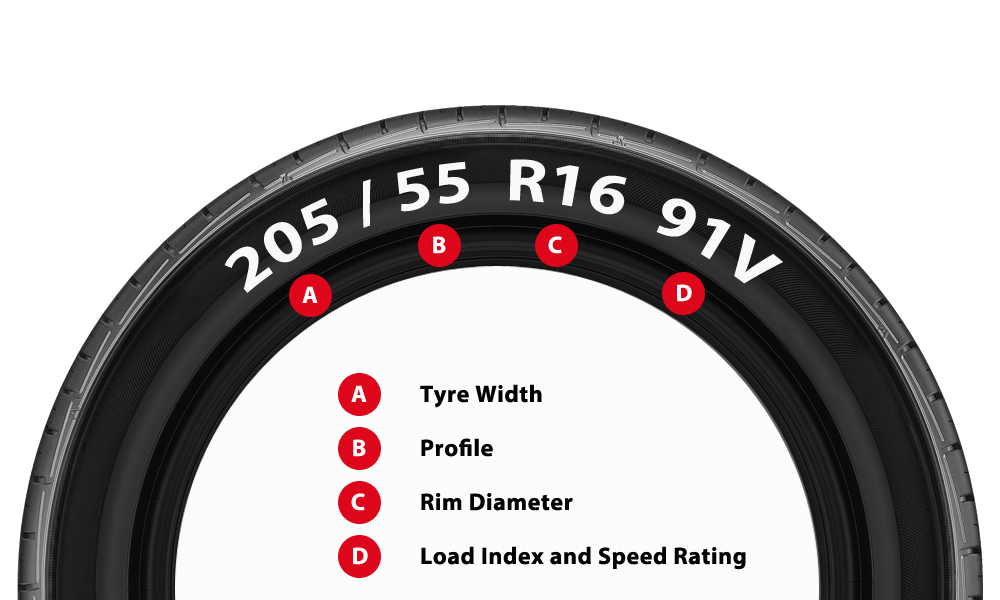 The factory 31-inch tires looked tiny on the truck from the factory and these new tires would fill the wheel well just right.
The factory 31-inch tires looked tiny on the truck from the factory and these new tires would fill the wheel well just right.
The technician at Ramona Tire made quick work of mounting the tires to the wheel, and before I knew it, they were on the truck. I also had the truck aligned to make sure that after adding the leveling kit everything would not create any uneven wear.
A good note to make when installing a leveling kit and brand new tires or any time the suspension is touched on a vehicle is to make sure to get an alignment. Having the alignment specs out of spec can create uneven wear on the tires and cut the life of the tires short.
In the end, I couldn’t be happier with the decision I made for the truck as it came out exactly how I wanted the first time with no rubbing. I am able to turn the steering wheel lock to lock with no issues. The ride of the truck is still as good as it was driving off the lot and I can still squeeze into those low hanging parking structures.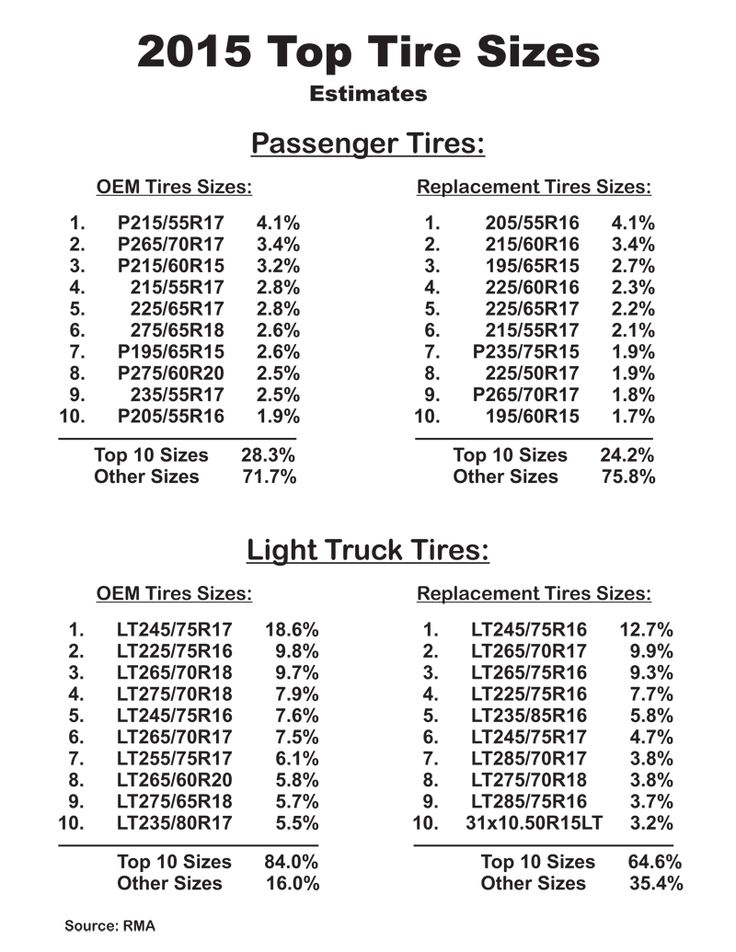
Before and after, what a difference a set of wheels and tires make on a truck like our 2019 Chevrolet Silverado.
For more information on Toyo Tires and to find a tire for your vehicle be sure to visit their website.
90,000 table of cargo tires for the size of the disk (Using Tire Disk)Search for goods
Sound Tires (TL) Konstantin Ishchenko experienced motorist Much depends on the condition of the suspension, springs and shock absorbers, but tires provide direct grip on the road. Wrong or worn tires can cause accidents. In this article, we will tell you how to avoid this. In spring, from winter to summer. Rules of the Customs Union "On the safety of wheeled vehicles" In autumn — from summer to winter. It's time to change tires if the average daily temperature drops below +10 °C: summer tires become dull, grip becomes worse. In autumn, it is much more difficult to sign up for a tire fitting: the closer the frost, the longer the appointment. People are afraid of ice, the prospect of hitting someone else's car or flying into a ditch. What to do? 21.02.20 Wheels were scratched in my car service center Car tires are a consumable item. When the tire is worn. Each car tire has a wear indicator - a special jumper between the tread islands. As soon as the tread wears off and matches the level of at least one of the indicator jumpers, it's time to change the tire. Such a tire is dangerous, especially on wet surfaces. /car service/ How to save on the operation of the machine Insufficiently high tread poorly removes water from the contact patch of the tire with the roadway. Where you can confidently drive 70–80 km/h on new tires, on worn tires you can lose control of the car already at a speed of 55–60 km/h. Some manufacturers apply their own wear indicators in addition to the standard ones. For example, on Nokian tires, numbers are cut in the middle of the tread: the larger the number, the deeper the cut. A relatively new tire will have many numbers, a worn one or two will remain - the rest will be erased. A drop with a cross is applied to the sidewall of the Continental tire. As soon as it is worn down to half, the tire should be considered worn out and replaced. But all these are rather exceptions - most tires do not have such indicators. Wear may be uneven. If the tire has been inflated, the center of the tread will be worn off. If the tire pressure was too low, it will be relatively fresh and the sidewalls of the tread will be worn out. It also happens that either the inner or outer side of the tread wears out on one wheel. This means that the camber is broken - the angle of the wheel relative to the vertical plane. In this case, it is important to sign up for wheel alignment - this is a service during which the wheel alignment angles are adjusted. It happens that the angles of the wheels are not adjusted. For example, if the car has been in a serious accident and its power parts of the body or suspension parts are deformed. In this case, you will have to eliminate these malfunctions, and then go to the wheel alignment stand again. /sud-autoservice/ As I sued the auto service Sawtooth, or comb, wear occurs on winter tires, if the toe is broken - the angle of the wheel in the horizontal plane. Sign up for a wheel alignment so that the same wear does not appear on the new tire. When the tire is damaged and it is noticeable. It is easy enough to damage a tire: cut the sidewall, run into a piece of reinforcement or get hit, in place of which a hernia will come out. All sidewall damage is a good reason to buy a new tire: repairs will be expensive and ineffective. When damage is present but not visible. Hidden damage may appear on the back of the wheel. For example, a driver caught a hole, felt a good hit, got out, saw that everything was in order, and drove on. And on the reverse side, a piece of rubber was torn out and the cord became visible - the metal carcass of the tire. Such damages are found only when inspecting the chassis or at a tire fitting, and this is bad: they can cause an accident or serious damage to the car. Service life of car tires. The tire life recommended by most manufacturers is five years, but this does not mean that they cannot be used for the sixth year. The expiration date is not limited by any documents. GOST R 52900-2007 Tire manufacturers estimate tire service life differently. Nokian provided the most detailed explanation: “Tire life is not defined by law, but tires can only be considered new if they have been manufactured within the last five years. 5 years tire life recommended by most manufacturers Storage location - less than a meter away from direct sunlight and heaters. In the sun, near the battery and in the rain, the tire will quickly lose its properties: the rubber will dry out and collapse. Permissible temperature - from -30 to +35 ° C, humidity - 50-80%. Do not leave the wheels dirty; they must be thoroughly washed before seasonal storage. Tires can be stored under a canopy in the open air for no more than a month. GOST 54266-2010 The method of storage depends on the set: either these are tires separately or the wheels are assembled. Tires up to 205 mm wide can be stored in even stacks up to 2 m high. Tires from 210 mm are stored vertically - on edge. GOST does not explain how to store the wheels as an assembly, but Nokian has a visual manual for storage. Continental recommends hanging wheels by rims or storing them in a stack, similar to tires, turning them over every 4 weeks. It is advisable to reduce the air pressure in the tire to 1-1.5 atm and not make stacks of wheels - a tire plus a disk - more than four pieces. Nokian Tire Storage TipsPDF, 2.1 MB Featured Articles for Motorists How to drive without fines and not overpay for car maintenance - in our mailing list along with other materials about money First of all, you need to decide which tires are suitable. All important characteristics are written on the sidewall of the tire. The dimensions of the tire are important to consider when selecting it for a specific vehicle and rim. Depending on the brand of car, they can be found on the gas tank flap or on the B-pillar in the driver's doorway. The recommended tire pressure is also written here. /usedcar/ How to buy a used car Tire sizes are indicated in the format xxx/xx Rx. They are on the sidewall of the tire. The first parameter is the tread width in mm. The size step is 10 mm, always 5 at the end. Next is the tire profile, or its height as a percentage relative to the width. The width of a tire with parameters 235/55/R16 is approximately 129 mm, and for a tire 195/55/R16 it is 107 mm. R - an indication of the type of tire, in this case, that it is radial. There are also diagonal ones, but this is an outdated design. The last two digits are the diameter of the rim in inches, on which the tire can be placed. It is undesirable to deviate from the tire parameters recommended by the car manufacturer. This can adversely affect handling, as well as cause the tire to rub against the wheel arch or suspension parts: this will damage the tire and increase the likelihood of an accident. It happens that on the front and rear axles from the factory there are disks for rubber of different sizes. Usually we are talking about the width - the rear wheels can be wider than the front. In the people, such a set of disks is called a different-wide one. Tube or tubeless construction. Previously, a car wheel consisted of three main parts: a disc, a tube, and a tire. The tire was responsible only for traction and overall strength, the chamber was a container for air. Now you can find a tube tire on a car only in a museum or in your grandfather's garage: the technology is outdated. Modern tubeless tires do not have these drawbacks. Special protrusions in the disks — hubs, for which the tire clings, help to maintain the tightness of the tubeless wheel. Cord construction type. Each tire is multi-layered, a single rubber product will not be able to provide the desired shape and strength. Bias Radial tire 2 layers of cord or more than 1 layer of cord Less contact stain with an expensive SPECTION with an expensive Tires Lighter are used on commercial equipment used on cars Cheaper More expensive DOT marking. The name comes from the American Department of Transportation - an analogue of our Department of Transportation. In 1978, this department approved mandatory labeling for all automobile tires, which includes Treadwear, Traction, and Temperature grades marked on the sidewall. Now most manufacturers use this system, selling tires without such marking is illegal in the USA. Treadwear. Some people want tires to last as long as possible, others want good grip. So far, these qualities have not been learned to combine in one tire. The wear rate of a tire is indicated by the Treadwear index. Typically, for products for passenger cars, this parameter ranges from 100 to 600. In terms of kilometers, this is approximately 10,000-15,000 km per hundred points. For example, index 240 corresponds to 24,000-36,000 km. Traction also shows the grip class, but unlike Russian traffic rules and technical regulations, the classification is based not on distance in meters, but on the deceleration coefficient - G, which the tire can provide. According to Traction, all tires are divided into classes according to their ability to effectively stop a car on wet asphalt and concrete: from the best AA to the worst C. Class AA G on asphalt More than 0. G on concrete 0.38 m/s² grade A G on the asphalt more than 0.47 m/s² G on concrete 0.35 m/s² B G on asphalt 9000 more than 0.38 m/s² g on concrete 0.26 m/s² Class C G on asphalt less than 0.38 m/s² G on concrete 0.26 m/s² Temperature characteristic, Temperature. All tires are divided into three classes according to the resistance to heat generation during movement: A, B and C. Class A tires effectively remove heat at speeds over 185 km / h, class B - from 160 to 185 km / h, class C - from 137 up to 160 km/h. For passenger cars, there are almost no tires on sale, except for class A. Run flat. This rubber has a thick and stiff sidewall. It can be driven up to 80 km at speeds up to 80 km/h after a puncture or side cut with a complete loss of pressure. It is important that the machine is equipped with a tire pressure system, otherwise the driver may not recognize a flat tire, exceed the recommended speed, or drive more than 80 km, which at best will lead to damage to the rim, and at worst, to an accident. Many vehicles come with runflat tires from the factory. Especially on those who do not have a spare tire. Such tires are 1.5-2 times more expensive than ordinary ones, they make driving less comfortable: due to the hard sidewall, such rubber smooths out bumps much worse and is heavier than conventional tires. But you don't have to call a tow truck: you can almost always get to the tire shop on your own. If you drive on a relatively flat road, there will be no damage to the alloy wheel: it is still a few centimeters from the road surface. /otozvali/ How to repair a car under a recall campaign Load and maximum speed indices. Load Index is a two- or three-digit number that indicates the maximum weight that the tire can support. Speed index Maximum speed, km/h If you want to know how to read the load index, find your value in the table. 1120 113 11503 114 1180 115 1215 116 12503 117 1285 9000 121 1450 122 1500 Pressure index is another name for the load index. Euro label. Manufacturers put special stickers on tires. They have three parameters that are not written about on the bus itself. These stickers appeared in 2012. Since then, they have been on any tire sold in the EU. The sticker complies with EC Regulation 1222/2009. This is a complex document with formulas and parameters like rolling resistance - it does not have the usual values like fuel consumption or braking distances. The sticker describes the tire according to three characteristics: noise level, fuel economy class and wet grip class. /top-economic-cars/ 11 economical cars for everyday driving Noise shows the noise level in decibels. One black sound wave is 3 or more decibels below the 2016 European norm. Two waves - at the normal level or quieter, but less than 3 decibels. Three - noisy tire, out of limit. Fuel economy class. A is the most economical. Road grip. The same letters, but without color indication. This estimate was obtained when checking the braking distance on asphalt. The shorter the stopping distance, the closer the letter is to the beginning of the alphabet. The difference between A and G is more than 18 meters: A is the minimum stopping distance, B is plus 3 meters to A, C is plus 7 meters to A, D is plus 10 meters to A, E is plus 12 meters to A, F is plus 18 meters to A. Color markers on tires. There are another colored stripes on the tire tread - these are technological marks, they are of no use to the buyer. The most pedantic car owners may try to buy a set of new tires with identical stripes, but it is better to focus on the stamp with the release date on the sidewall. Features of the choice of all-weather tires. Theoretically, they can be ridden all year round. The rubber compound works in the temperature range from -7 to +15 °C. In severe frosts, rubber hardens like summer tires at temperatures below +10 °C, and in hot weather it becomes softer, like winter tires at temperatures above +7 °C. In any case, all-season tires are not suitable for either hot asphalt or ice ruts. All-season tires are chosen when they want to save on tire fitting and buying an extra set of tires. This is true for crossovers and SUVs with relatively low annual mileage. Features of the choice of summer tires. The opposite - tires for those who like to push the gas to the floor. Such tires will make noise, increase fuel consumption and wear out in one or two seasons. In return, the driver will get excellent grip and driving pleasure. Features of the choice of winter tires. Winter tires come in three types. The studded tires are good for driving on ice and packed snow. They have relatively hard rubber, deep tread and studs. And they also hold the road well on asphalt: the spikes have been hidden in the tread for a long time. Ideal conditions - ice cover above -15°C. The ice is soft enough for the spikes to grip most effectively. Disadvantages: they are very noisy, they have a low speed index. Usually, you can drive on studded tires no faster than 160-180 km/h. And they are also banned in many European countries because they spoil the asphalt. Scandinavian type friction tires, aka Velcro, without studs and made for harsh winters. Rough tread pattern, soft rubber compound and many sipes - horizontal slots on the islands of the tire tread. Ideal conditions are snow and ice below -15°C. They are noticeably quieter, you can move at a much higher speed on them. Disadvantages: such tires wear out quickly, almost do not hold the car on melted smooth ice at temperatures above -5 °C. There is a small distance between the tread islands, such tires do not drain water well from the contact patch with the roadway. Alpine type friction tires without studs and made for mild winters. There are 1.5-2 times fewer sipes on the tread, the grooves for water drainage are much wider. Ideal conditions - puddles, asphalt, -5 to +3 °C. Well remove water from the contact patch with the roadway. Disadvantages: poor grip on any ice and packed snow. According to the Rules of the Road, different tires cannot be put on one axle of a vehicle. This is considered a malfunction in which the use of a car is prohibited. clause 5 of the SDA of the Russian Federation: wheels and tires At the same time, the rules do not prohibit installing tires of different brands and models on different axles of the same car, but it’s better not to do this. The car and all its systems are designed for the same tires with the same grip. This is especially true for modern cars with many electronic assistants: stabilization systems, brake force distribution. You can drive on such a combination of tires, but no one knows how the car will behave in an extreme situation. Like everywhere else, there are premium brands and there is something cheap. But cool brands have failed models, while budget brands have successful ones. There is a lot of research and testing behind well-known brand tires. Before entering the market, large companies test each new model in the most extreme conditions. Tires can be rolled on arctic ranges or in the desert. Often, rubber is tested in the conditions of sports competitions and only then the technology is sent to the mass market. The more famous the manufacturer and the more expensive its products, the greater its budget for the development of new models. There are also very cheap tires, often from China. They can directly write that they copied the tread pattern of a prestigious model, but this is not enough: there is also a rubber composition, cord design and other parameters. Prices for tires of the same size may differ by multiples. The smaller the profile and the larger the width, the greater the difference. To look at something other than the brand and choose what you need, there is an algorithm: Specialized shops. There is a large selection, manufacturers' catalogs and competent advice. This will appeal to those who buy car tires for the first time or are simply not very interested in the technical side of cars. There is a service here - there will be a guarantee for tires, there is tire fitting and seasonal storage. Online hypermarkets and warehouses. Rubber is sold by large Internet sites and small shops. The option is suitable for those who want to find cheaper, are ready to take risks and waste time for this. Here, the entire responsibility for checking the parameters of the tire, the date of its release and, in general, compliance with the order lies with the buyer. If something goes wrong, you will have to take all four tires to no one knows where and change them. Tire fitting and storage is the buyer's concern. /save/mashina-hack/ How to save on car maintenance? Flea markets, car club forums and ad services. At Avito, Yulia and specialized automotive forums they offer a lot of rubber. You can buy a completely fresh set at a good price, or you can buy rubbish and expensive. There is a great risk of buying tires with hidden damage: the fact that the tire is crooked will only be opened at a tire fitting, many hernias will be visible only on an inflated tire. Sometimes the ability to measure depth and read parameters does not help. To put the correct year on an old tire, there is a special stamp. The tread depth can be machined, and a tire that is white from old age can be treated with ink. With the help of special equipment, you can even remove the remnants of the old protector and stick on a new one. It remains to hope for the reputation of the seller and look at the goods that he sells or sold. I try to avoid those who sell used rubber all the time. First of all, the size. The larger the diameter, the more expensive. But at the same time, the lower the tire profile, the more expensive it is. This may seem counterintuitive, as less material is used. Tire inner layers and construction play an important role. Due to the low profile height, the sidewall of such a tire must be much stronger than the same tire with a high profile. Tire make and model affected. Tires with runflat technology are more expensive than conventional tires, because their sidewalls have special requirements. Is it worth buying retreaded tires? It is almost impossible to buy such tires for a passenger car in Russia in 2021. The cord design of car tires for projector restoration is not intended, unlike truck tires, for which this is a very popular service. In some countries in Eastern Europe, you can buy retreaded tires in popular sizes, but their properties are mediocre: long braking distances, poor handling. When is the best time to buy tires? The popular theory that tires are best bought between seasons is no longer relevant. You won’t be able to save money this way: the price of tires almost does not change throughout the year. The tire business is seasonally cyclical, and you should not hope for discounts on studded tires and its wide selection in June. For the next winter season, it will be delivered in August, and summer tires in March. But by the season, the freshest tires will be on sale. This is true for those who drive very little, or for sports tires. The fresher the tire, the better the grip will be: the rubber compound loses its properties over time. Always make sure that your tire pressure is correct: it is critical to tire health. If you lose pressure, do not continue driving on an empty wheel: this may destroy the tire. Try not to store tires and the vehicle within half a meter of heaters. Old tires cannot simply be thrown in the trash or buried. This is hazard class 4 waste, they must be disposed of. GOST 12.1.007-76 Tires can be sold on Avito or other ad service. 17.70019 9.5R17.5 9.5R17.5 205/65R17.5 10R17.5 9001.75/ 205/75R17.5 /65r17.5 205/75r17.5 225/75R17.5 215/75R17.5 235/75R17.5 225/75R17.5 245/70R17. 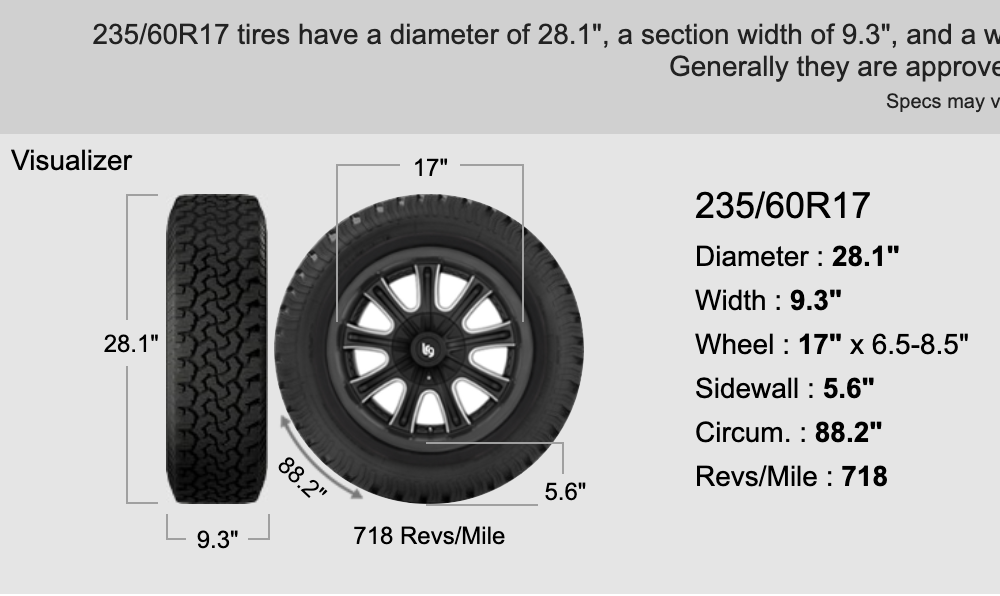 5
5 245/75R17.5 265/70R17.5
9000 R20 ДИАМЕТР 19.5 19.5×6.75 19.5×7.50 19.5 ×8.25 19.5×11.75 19.5×13.00 19.5×14.00 9.5R19.5 245/70R19.5 265/70R19.5 385/ 55R19.5 425/55r19.5 425/55r19.5 245/70r19.5 265/70r19.5 285/70r19.5 385/65/65r 50r19.5 435/50r19.5 265/70r19.5 285/70r19.5 305/70r19.5 445/445/445/445/445/ DIAMETER 22.5 22. 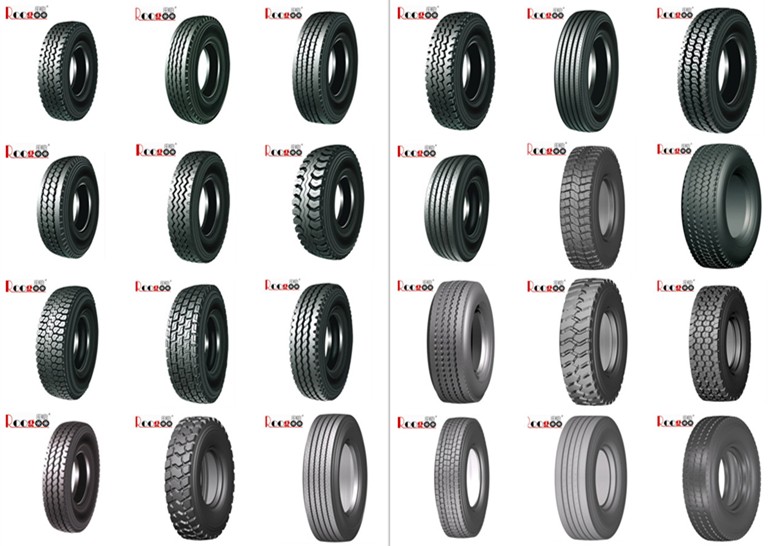 5×6.75
5×6.75 22.5×7.50 22.5×8.25 22.5×9.00 22.5×11.75 22.5×13.00 22.5×14.00 /45r22.5 8R22.5 10r22.5 11r22.5 12r22.5 365/70r22.5 415/45r22 12R22.5 13R22.5 375/90r22.5 425/65r22.5 425/65r22.5 10r22.5 255/70r22.5 255/70r22.5 .5 .5 9002 385/55r22.5 445/75r22.5 435/45r22.5 255/70r22.5 265/60r22.5 265/60r22.5 385/65R22.5 445/65R22.5275/70r22.5 295/80r22.5 445/75r22.5 275/80r22.5 275/80r22.5/60r2.5/60r2.5/60r2.5/60r2.5/60r2. 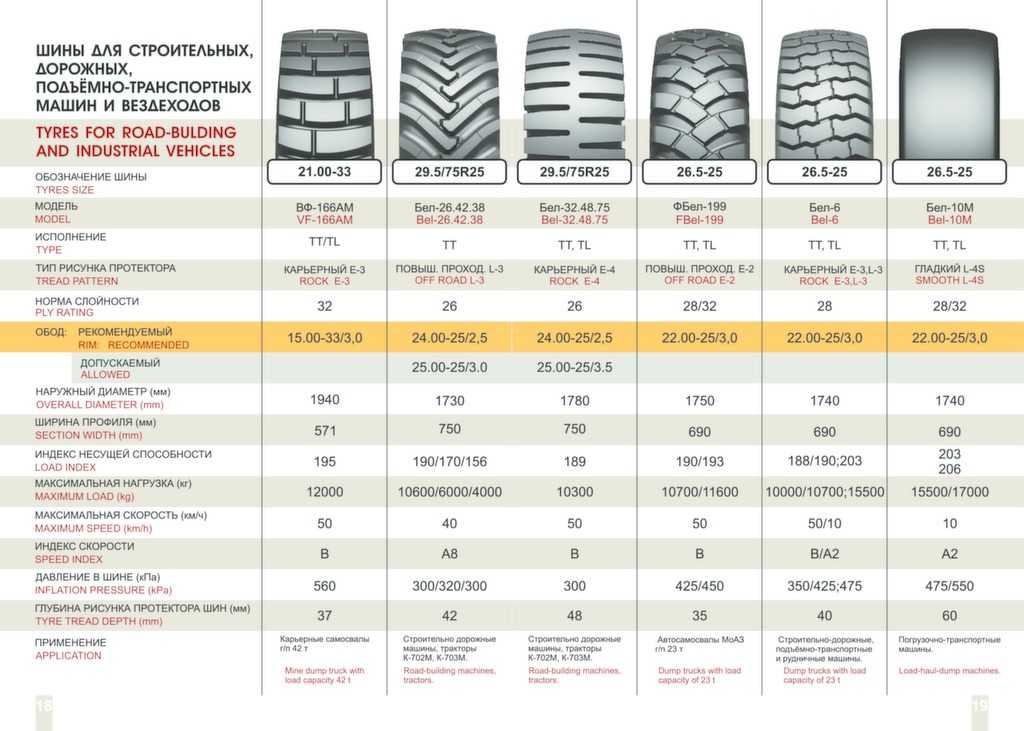 5/60r2.5/60r2.5/62.5/60r2.5/60r2.5/60r2.5/62.5/60r
5/60r2.5/60r2.5/62.5/60r2.5/60r2.5/60r2.5/62.5/60r 285/60R22.5 305/70R22.5 295/80R22.5 315/60R22.5 305/70R22.5 315/70R22.5 315/75R22.5 315/80r22.5 270/95R20 270/95R20 290/95R20 330/95R20 290/95R20 290/95R20 300/95R20 330/80R20 300/95R20 330/95R20
Interchangeability of truck tires and rims.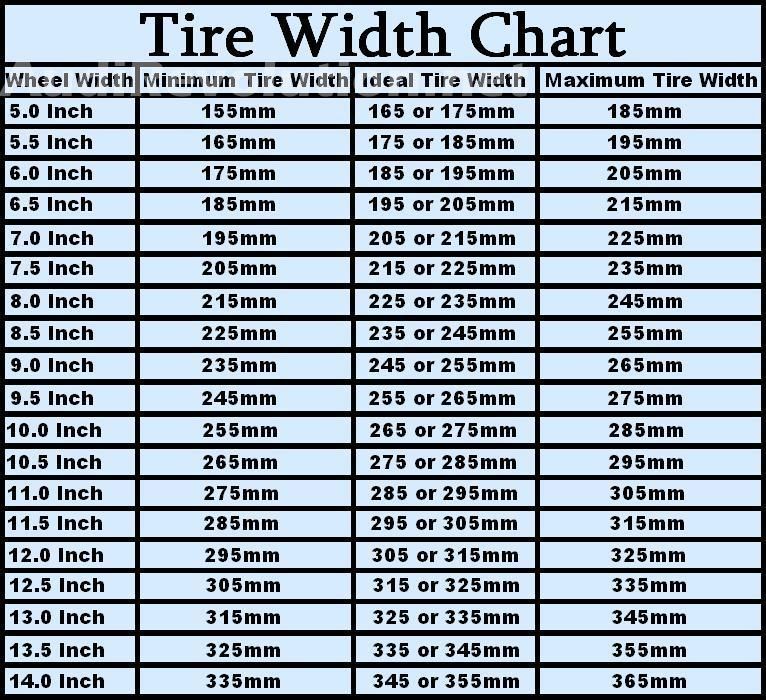
How to choose tires for a car, when to change tires, how to understand that tires have expired
What you will learn
When to change tires for the season
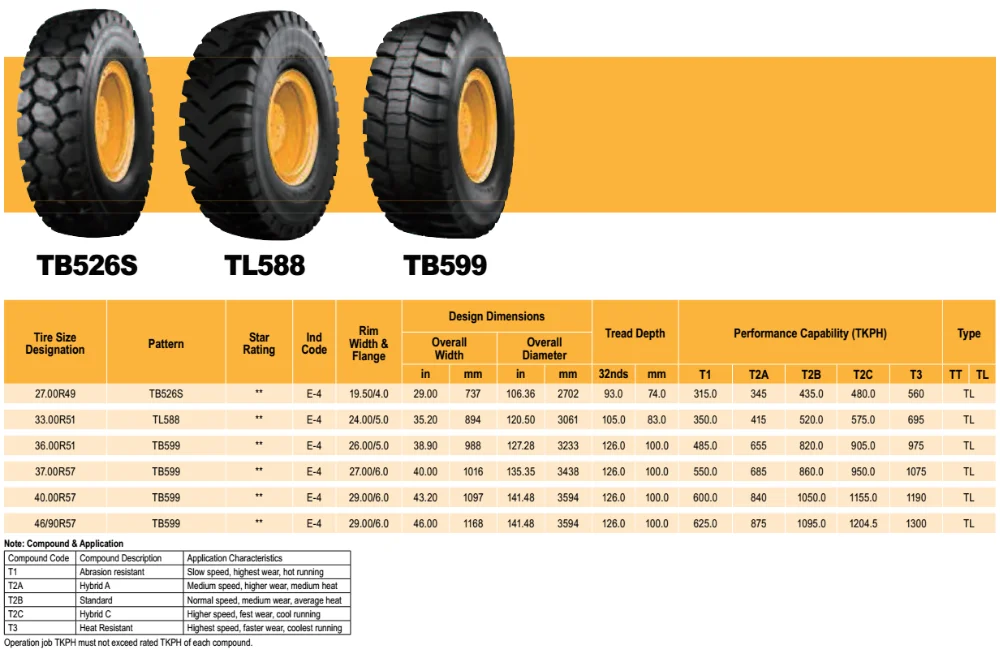 There are no strict requirements in the regulatory documents: it is recommended to use winter tires from December to February, and summer tires from June to August. There are requirements for studded tires: they cannot be used from the first of June - for this they can be warned or fined 500 R. From winter to summer, they change shoes at an average daily temperature above +7 ° C. After this mark, winter tires wear out quickly and hold the road poorly.
There are no strict requirements in the regulatory documents: it is recommended to use winter tires from December to February, and summer tires from June to August. There are requirements for studded tires: they cannot be used from the first of June - for this they can be warned or fined 500 R. From winter to summer, they change shoes at an average daily temperature above +7 ° C. After this mark, winter tires wear out quickly and hold the road poorly. How to understand that it is time to change the tires
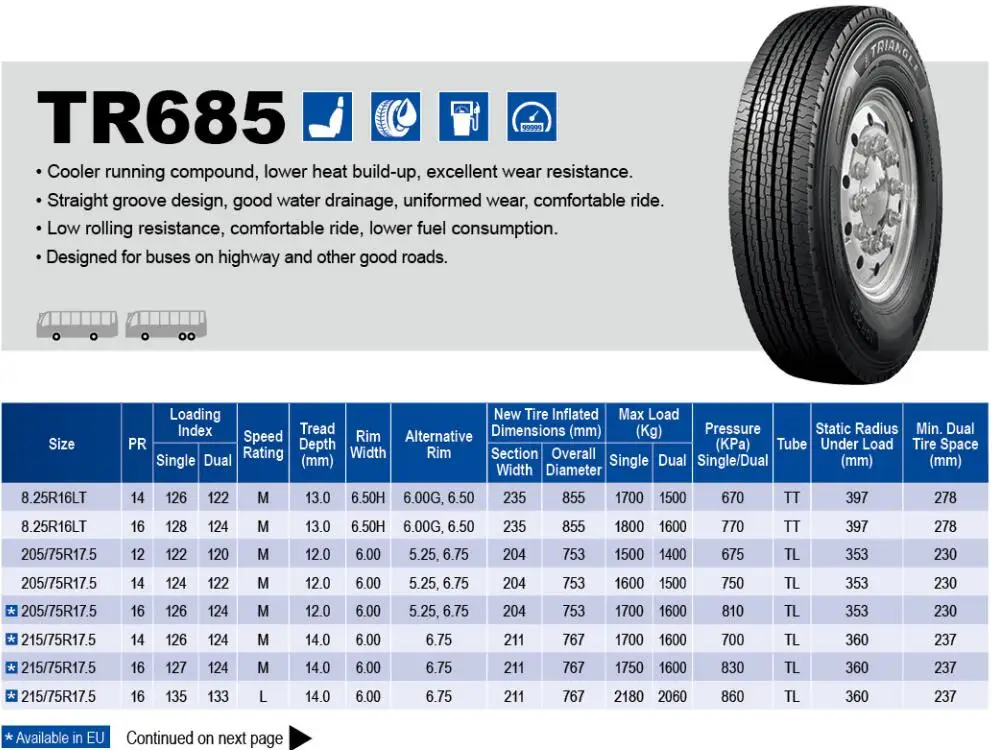 In addition to seasonal replacement, it is important to replace them as soon as they are worn out or seriously damaged.
In addition to seasonal replacement, it is important to replace them as soon as they are worn out or seriously damaged. 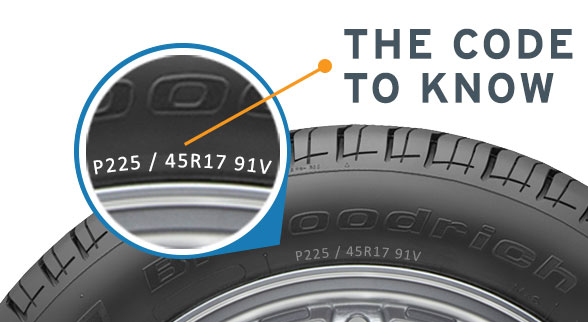

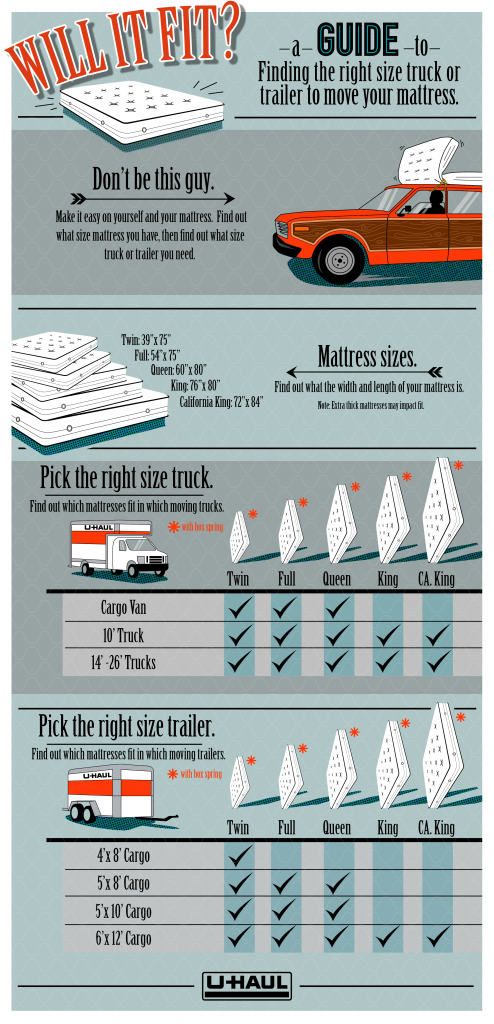 Damage to the working part of the tire - the tread - is less critical.
Damage to the working part of the tire - the tread - is less critical. 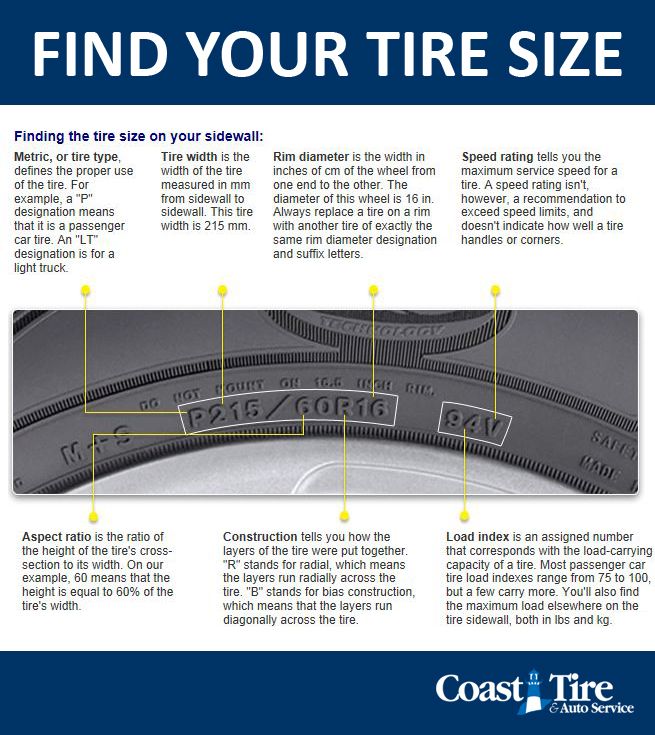 The recommended tire life is 6 years and the maximum is 10 years. Then the tire loses its consumer properties: grip deteriorates, vibration may appear on the body or steering wheel.
The recommended tire life is 6 years and the maximum is 10 years. Then the tire loses its consumer properties: grip deteriorates, vibration may appear on the body or steering wheel. How to store tires
 Every three months, all tires, regardless of width, should be rotated to change the footprint.
Every three months, all tires, regardless of width, should be rotated to change the footprint. How to choose tires for your car
 All options provided for by the design of the car are written on special plates.
All options provided for by the design of the car are written on special plates.  These have not been used for cars for a long time. The difference is in the design of the cord. A popular misconception is that R is a radius.
These have not been used for cars for a long time. The difference is in the design of the cord. A popular misconception is that R is a radius. Tire construction
 This design had serious drawbacks:
This design had serious drawbacks:
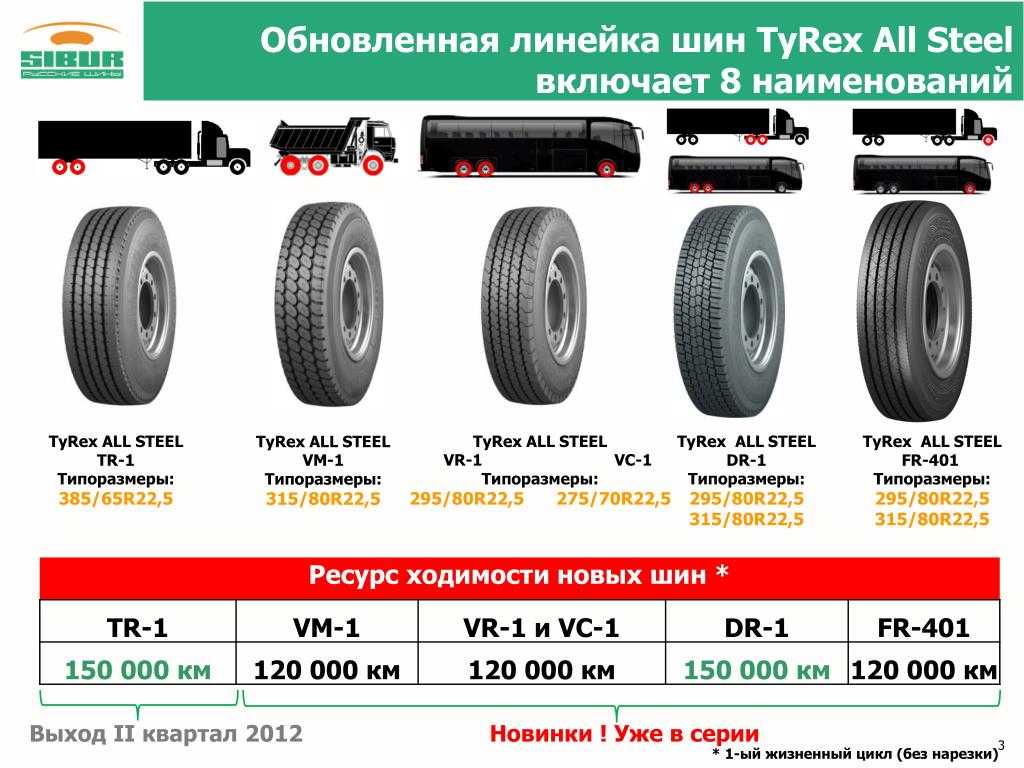 Therefore, inside the tire there is a cord - a kind of carcass. The cord can be metal, synthetic fibers or textile threads. According to the method of laying the cord, tires are divided into radial and diagonal.
Therefore, inside the tire there is a cord - a kind of carcass. The cord can be metal, synthetic fibers or textile threads. According to the method of laying the cord, tires are divided into radial and diagonal. Tire properties depending on the paving method
Bias tire Radial tire 2 or more cords 1 ply cord Smaller footprint Larger road contact patch Tire heavier than Tire lighter Used on commercial vehicles Used on passenger cars Cheaper than More expensive 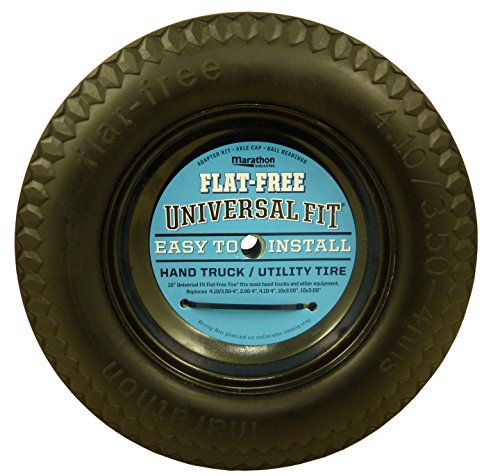 For diagonal tires, the cord layers overlap each other diagonally. Source: Kolobox
For diagonal tires, the cord layers overlap each other diagonally. Source: Kolobox Other specifications and features of automotive rubber
 At the end of the range there will be tires that were used with a calm driving style.
At the end of the range there will be tires that were used with a calm driving style. Traction classification
Class G on asphalt G on concrete AA More than 0.54 m/s² 0.38 m/s² A More than 0.47 m/s² 0.35 m/s² B More than 0.38 m/s² 0.26 m/s² C Less than 0.38 m/s² 0.26 m/s² 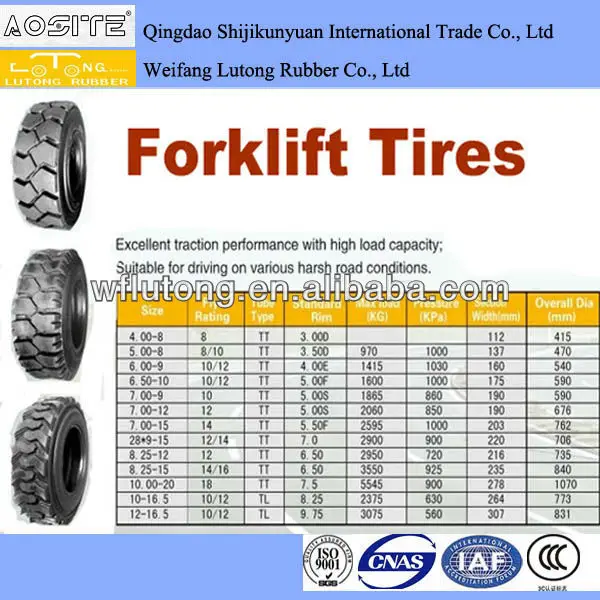 54 m/s²
54 m/s² 
 The speed index is denoted by a Latin letter. It shows the maximum allowable speed that the tire can withstand. All indices are summarized in tables.
The speed index is denoted by a Latin letter. It shows the maximum allowable speed that the tire can withstand. All indices are summarized in tables. How to read speed index
Speed index Maximum speed, km/h L 120 M 130 N 140 P 150 Q 160 R 170 S 180 T 190 U 200 H 210 V 240 W 270 Y 300 Z 300+ 
Load index Weight per tire, kg Load index Weight per tire, kg Load index Weight per tire, kg 62 265 83 487 104 900 63 272 84 500 105 925 64 280 85 515 106 950 65 290 86 530 107 975 66 300 87 545 108 1000 67 307 88 560 109 1030 68 315 89 580 110 1060 69 325 90 600 111 1090 70 335 91 615 112 1120 71 345 92 630 113 1150 72 355 93 650 114 1180 73 365 94 670 115 1215 74 375 95 690 116 1250 75 387 96 710 117 1285 76 400 97 730 118 1320 77 412 98 750 119 1360 78 425 99 775 120 1400 79 437 100 800 121 1450 80 450 101 825 122 1500 81 462 102 850 123 1550 82 475 103 875 124 1600 
 The lower the class, the more the tire resists rolling and the higher the fuel consumption. There is a 7.5% difference in fuel consumption between the most economical class A tire and the most "wasteful" class G. That is, for an average car with a consumption of 10 liters per 100 km and an annual mileage of 25,000 km, class A tires will save up to 187 liters of fuel - 8000 R.
The lower the class, the more the tire resists rolling and the higher the fuel consumption. There is a 7.5% difference in fuel consumption between the most economical class A tire and the most "wasteful" class G. That is, for an average car with a consumption of 10 liters per 100 km and an annual mileage of 25,000 km, class A tires will save up to 187 liters of fuel - 8000 R.  These drawings guide the production line, and they can also show the batch and release date.
These drawings guide the production line, and they can also show the batch and release date. How to choose the right tire for different conditions
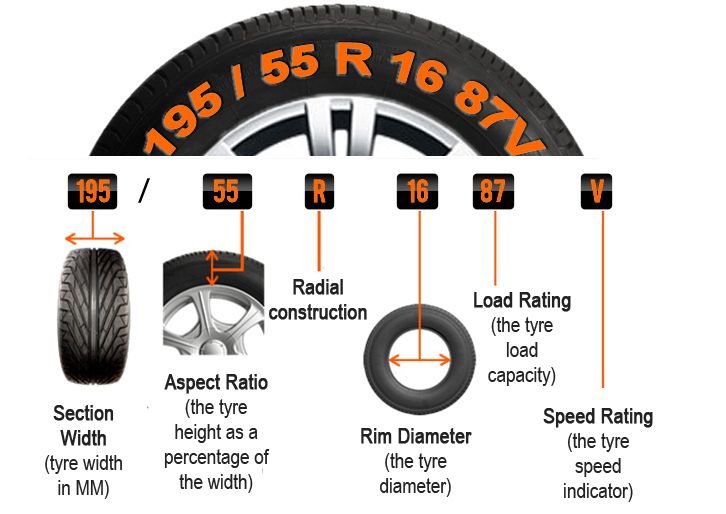 There are models for quiet city driving. Such tires will help save fuel, please with a low noise level and will last three to four seasons. At the same time, they will not tolerate overheating, will not provide perfect grip on the road and will not allow you to drive a car with great comfort.
There are models for quiet city driving. Such tires will help save fuel, please with a low noise level and will last three to four seasons. At the same time, they will not tolerate overheating, will not provide perfect grip on the road and will not allow you to drive a car with great comfort. 
 This is the most wear resistant winter tire.
This is the most wear resistant winter tire. Is it possible to put different tires
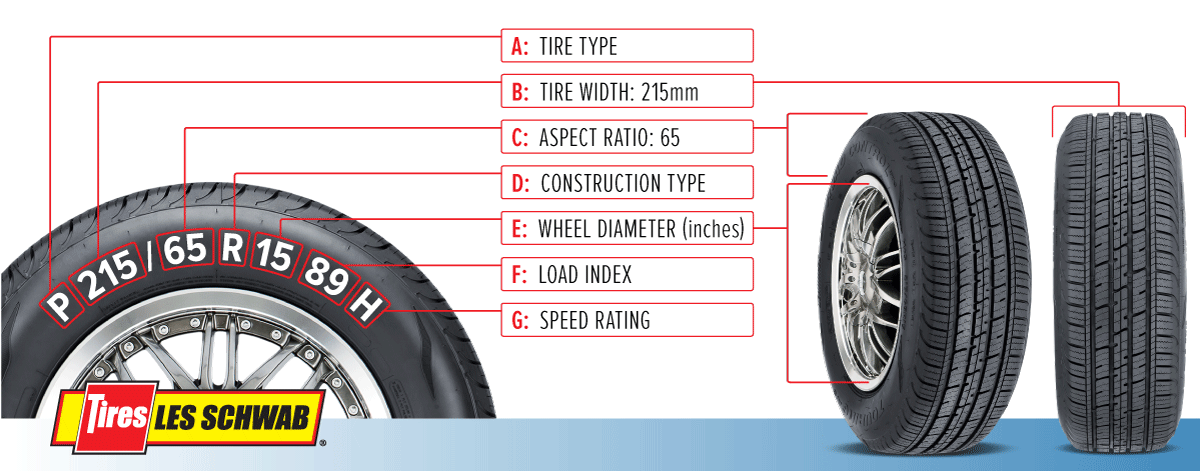
How to choose a manufacturer
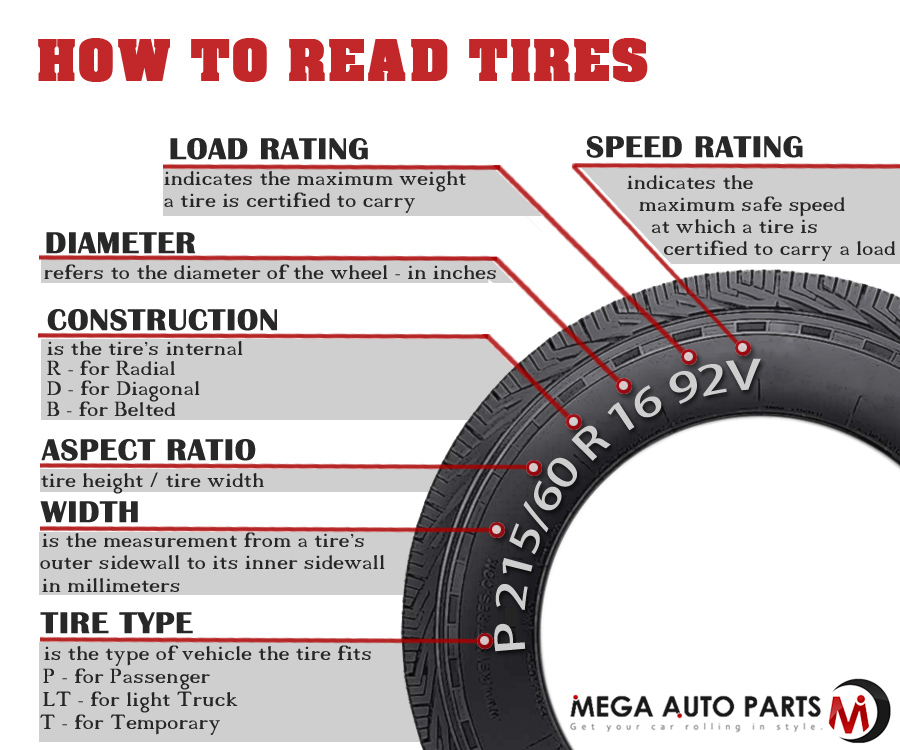
Where to buy car tires
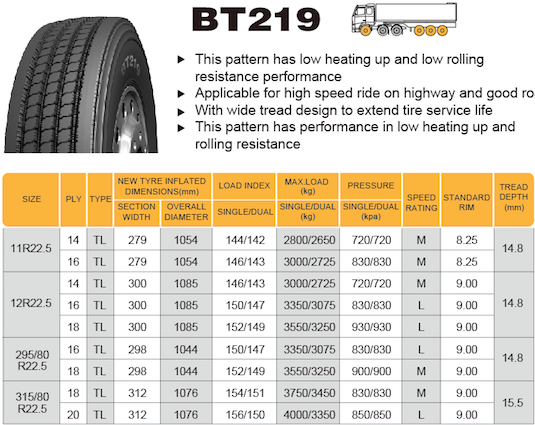 The one-stop principle works: you can arrive on spikes and leave on a new summer and with an empty trunk.
The one-stop principle works: you can arrive on spikes and leave on a new summer and with an empty trunk. 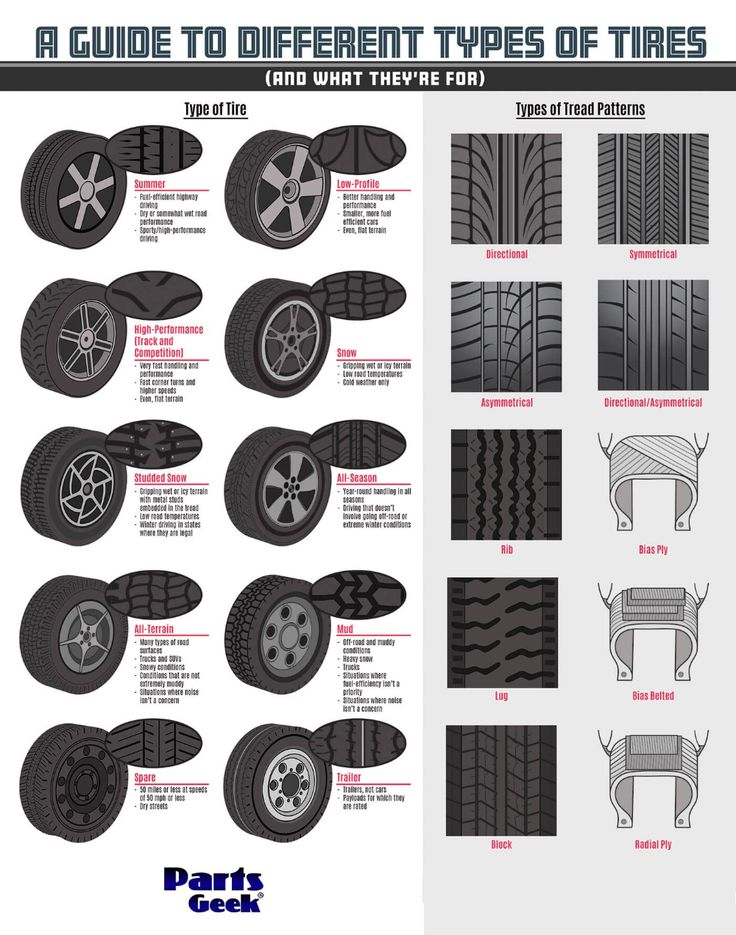
What affects the cost of tires
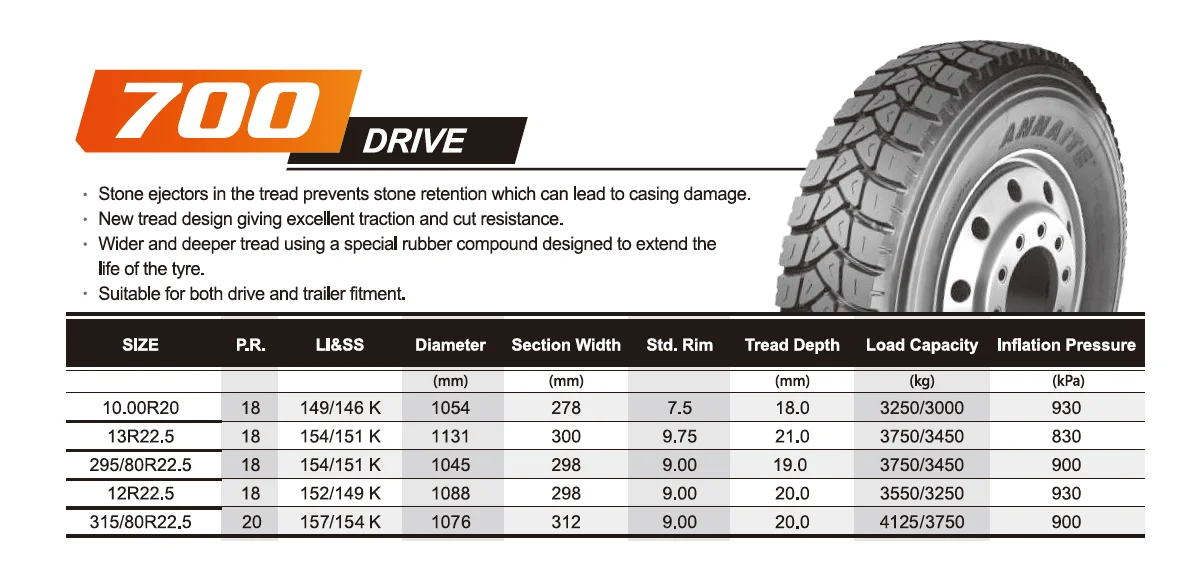 Rubber from large, famous brands with a century of history is more expensive, but the budget lines of well-known companies will allow you to save a lot. Tires of young, unknown manufacturers, especially Asian ones, will cost even less.
Rubber from large, famous brands with a century of history is more expensive, but the budget lines of well-known companies will allow you to save a lot. Tires of young, unknown manufacturers, especially Asian ones, will cost even less. How to save money on tires
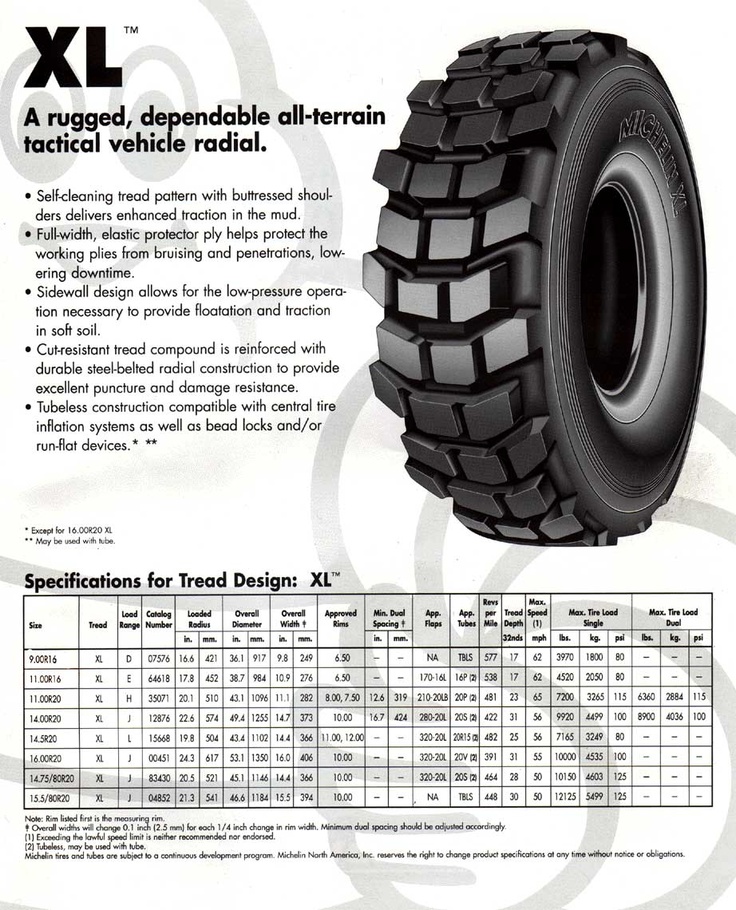
Rules for the use of rubber
How to dispose of unwanted rubber
